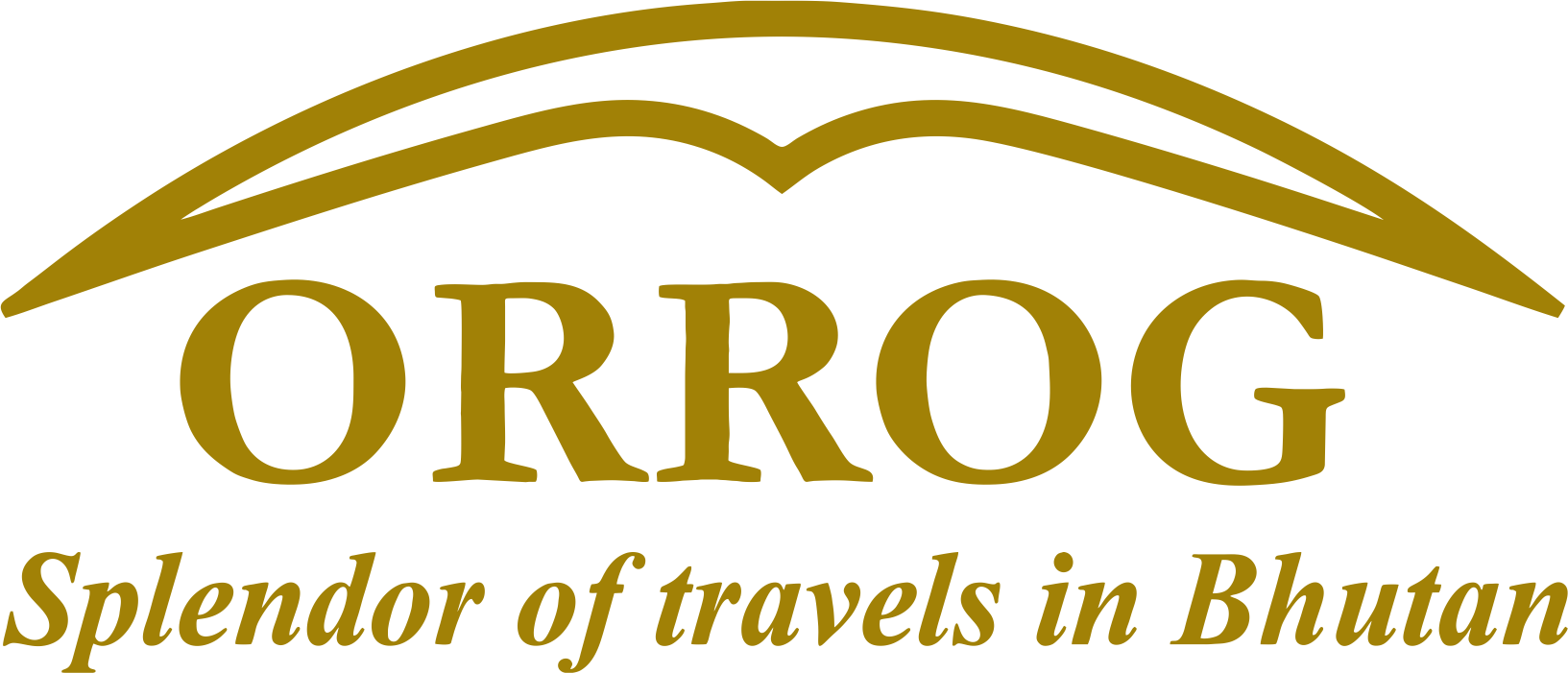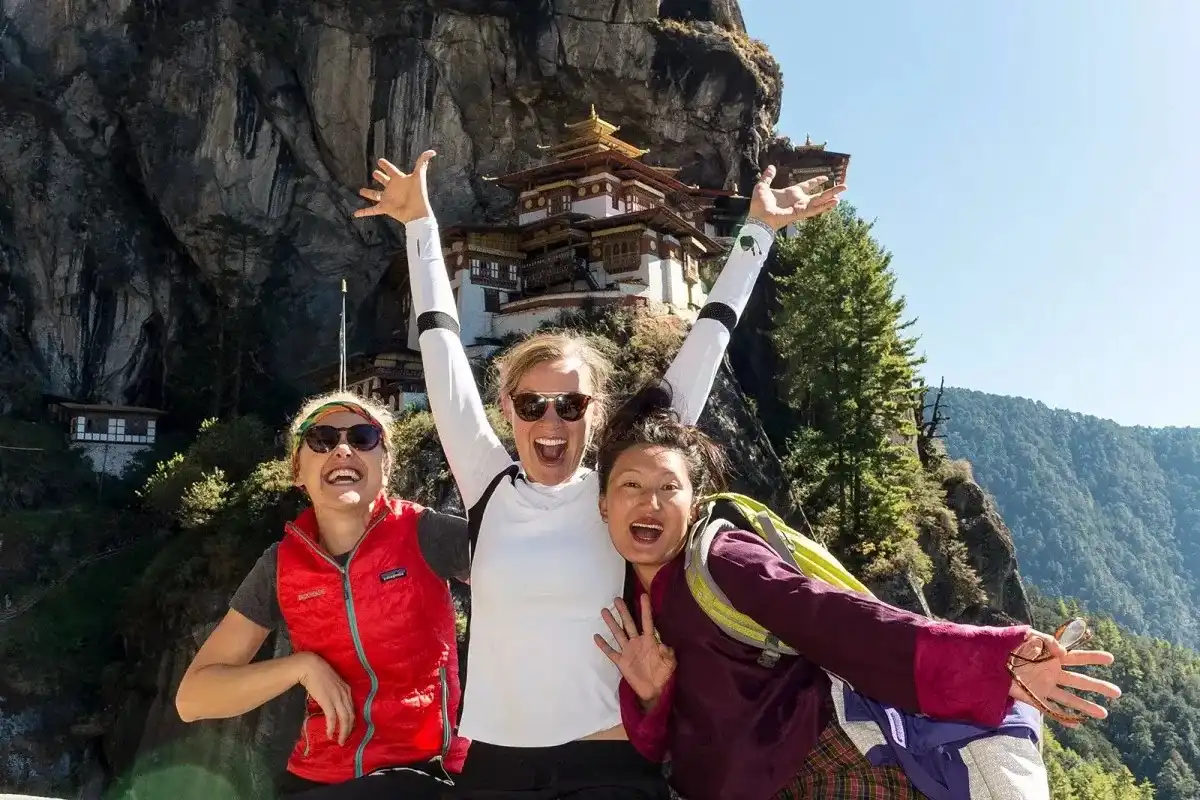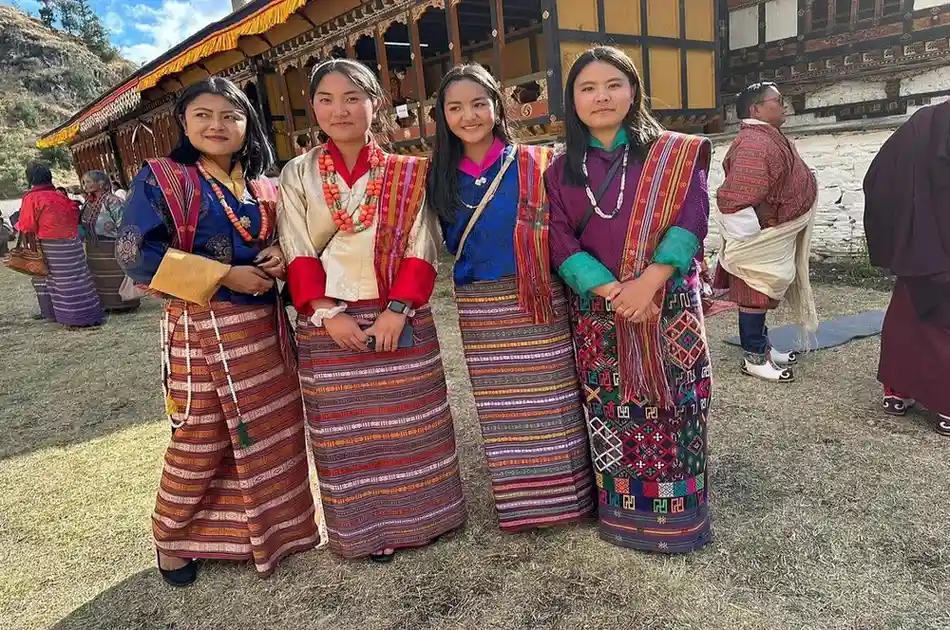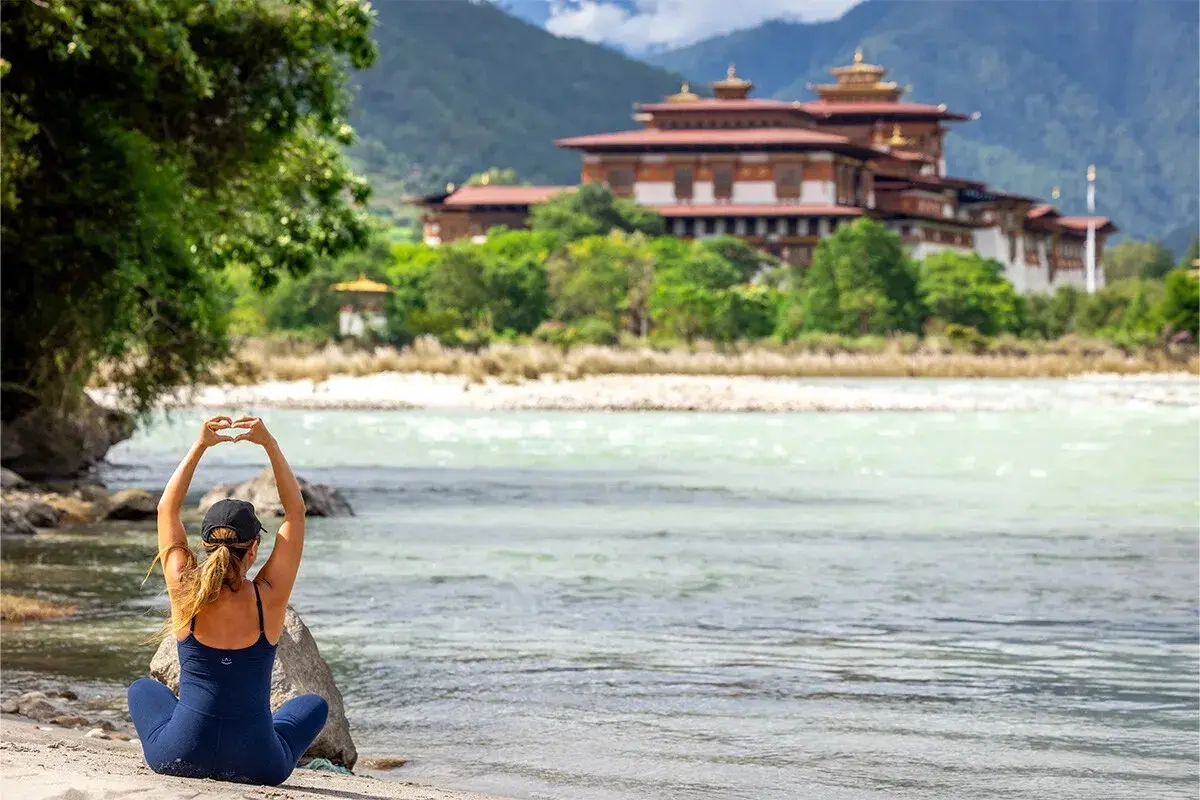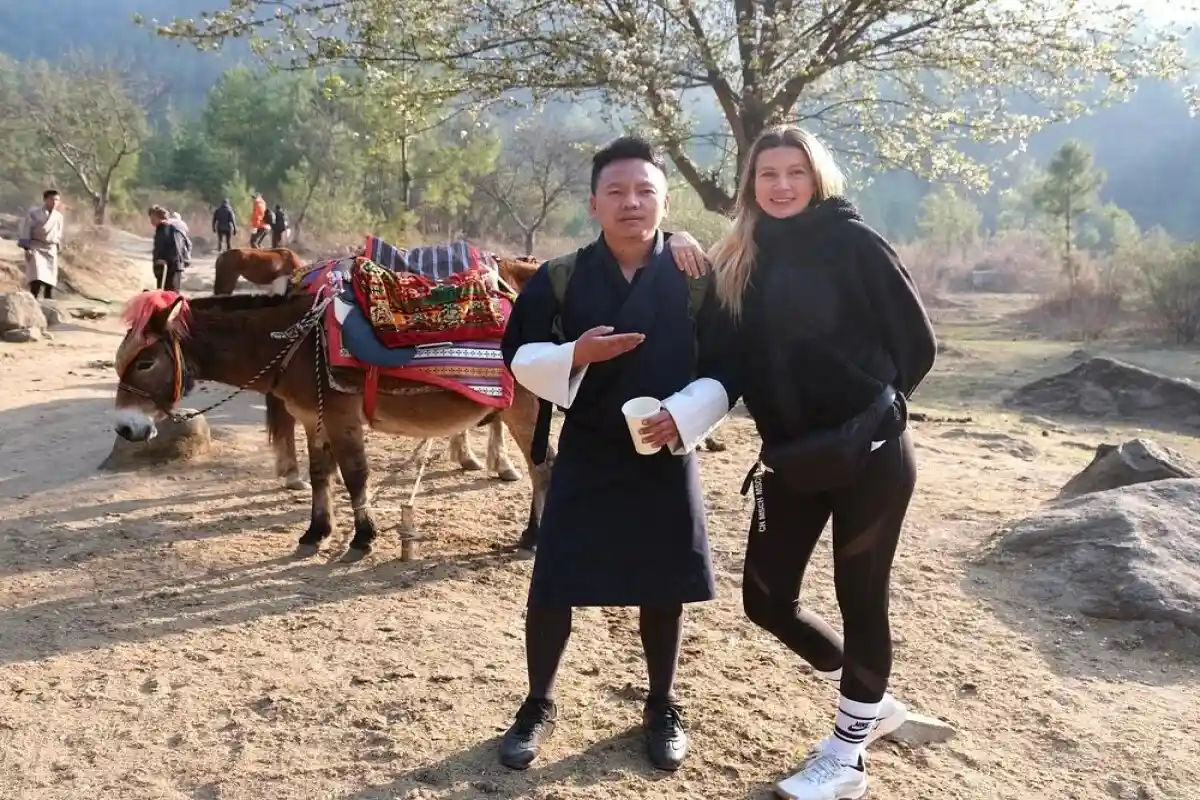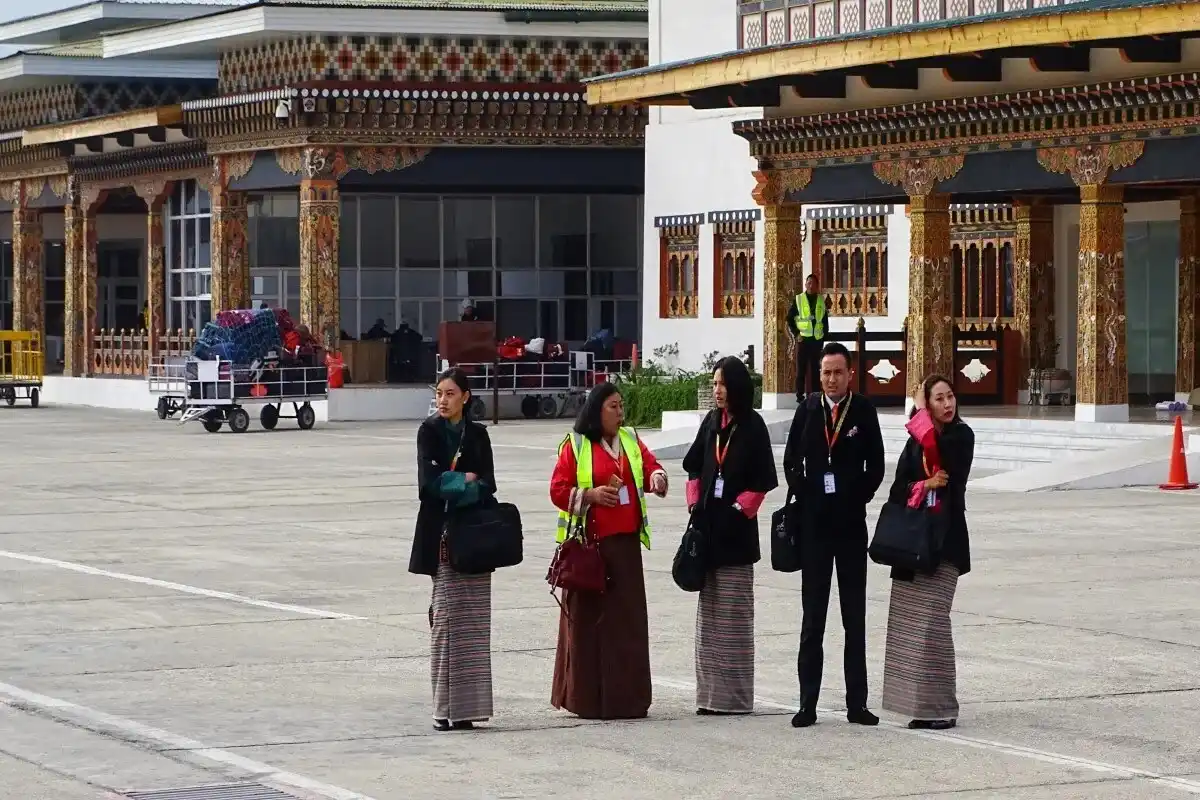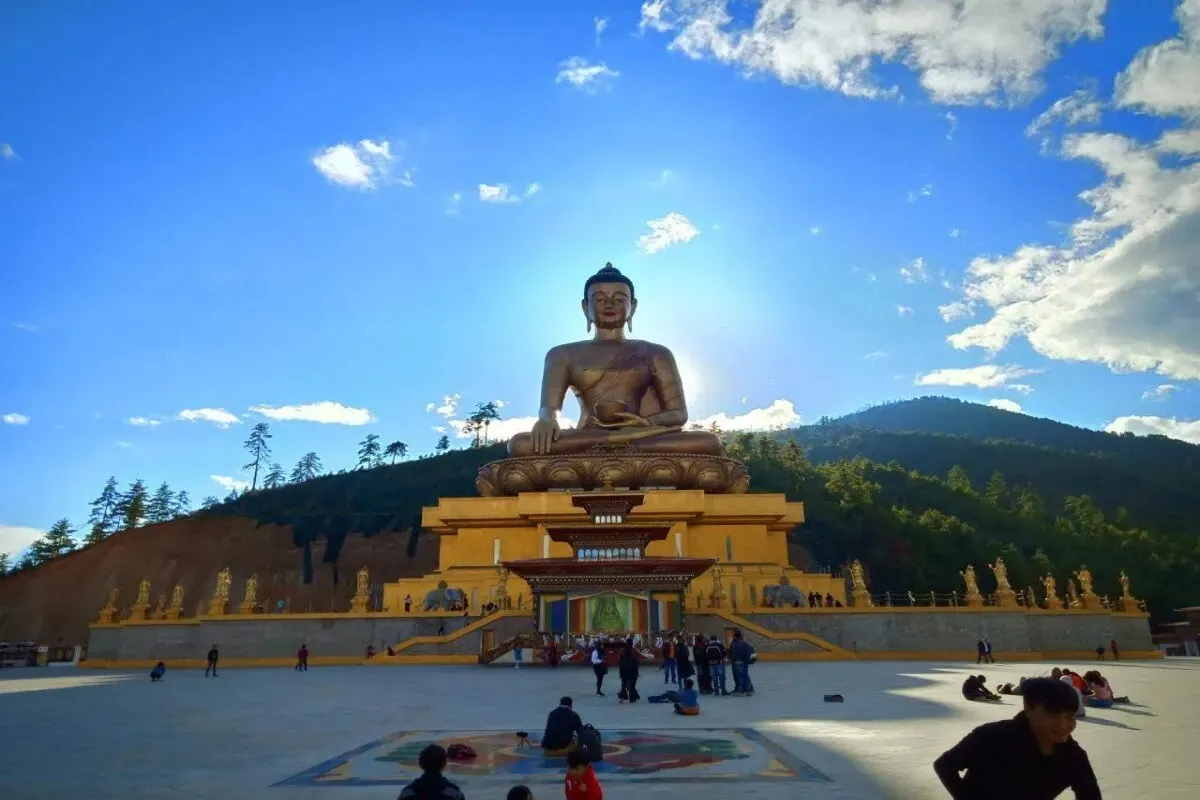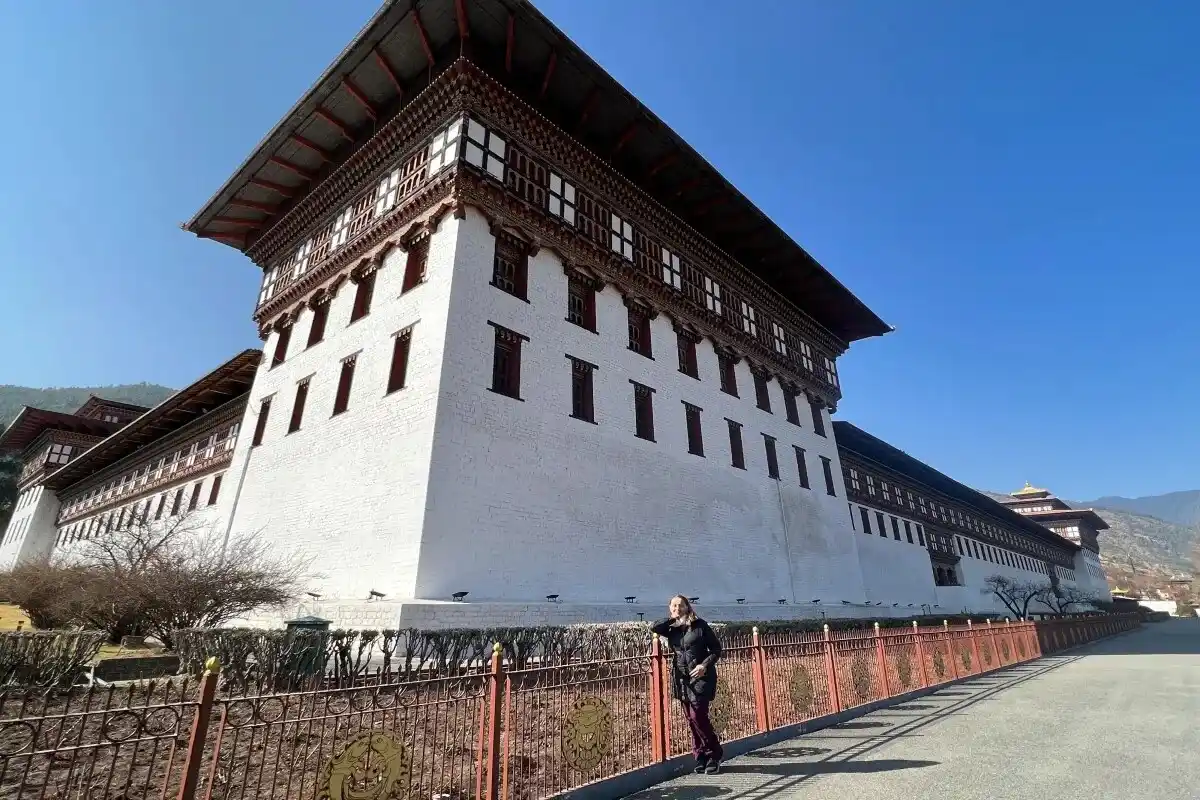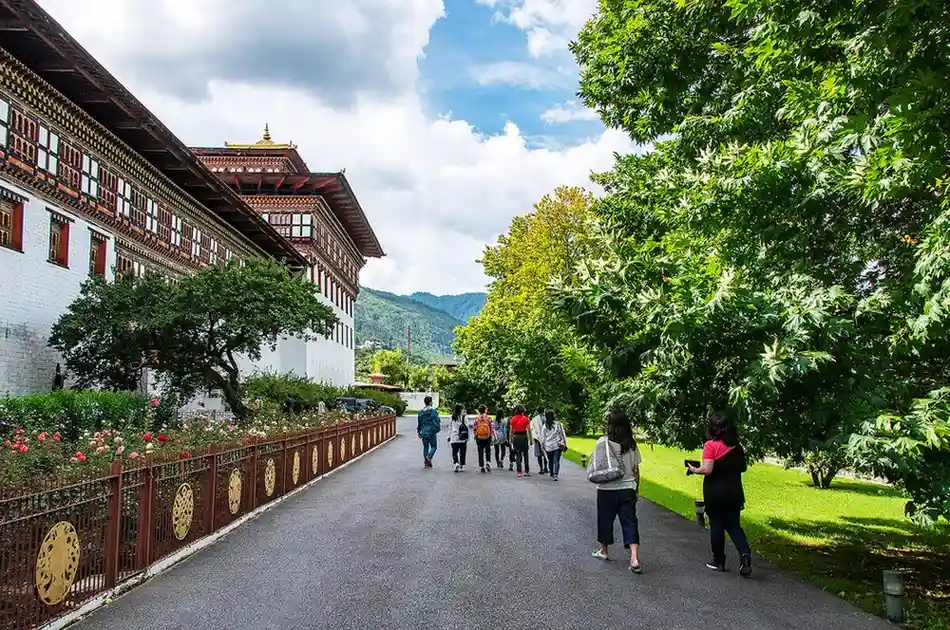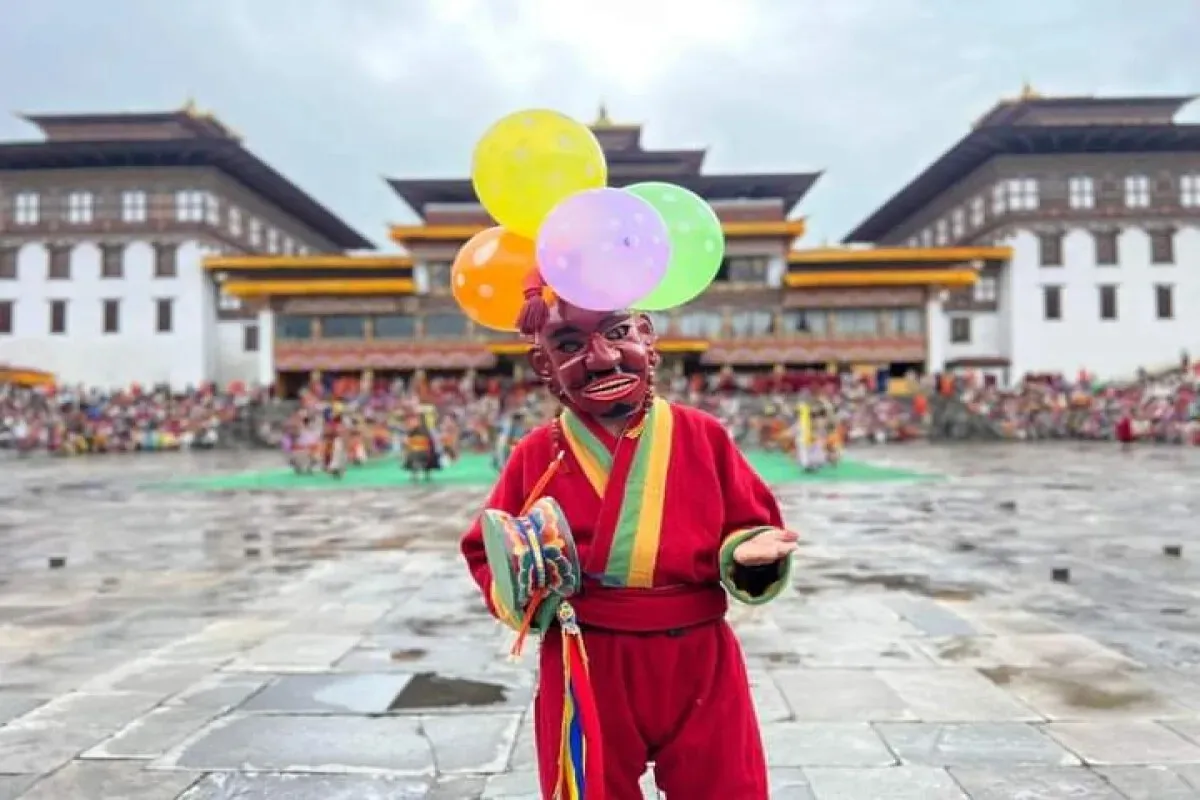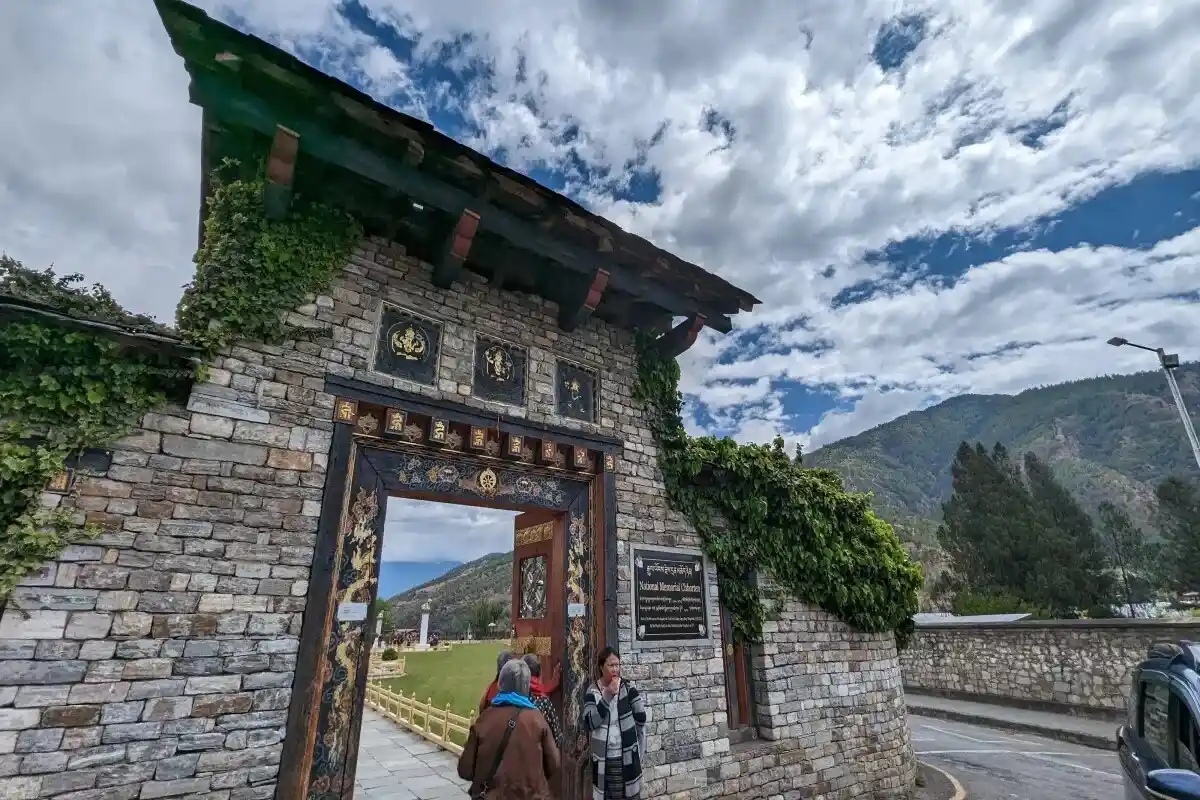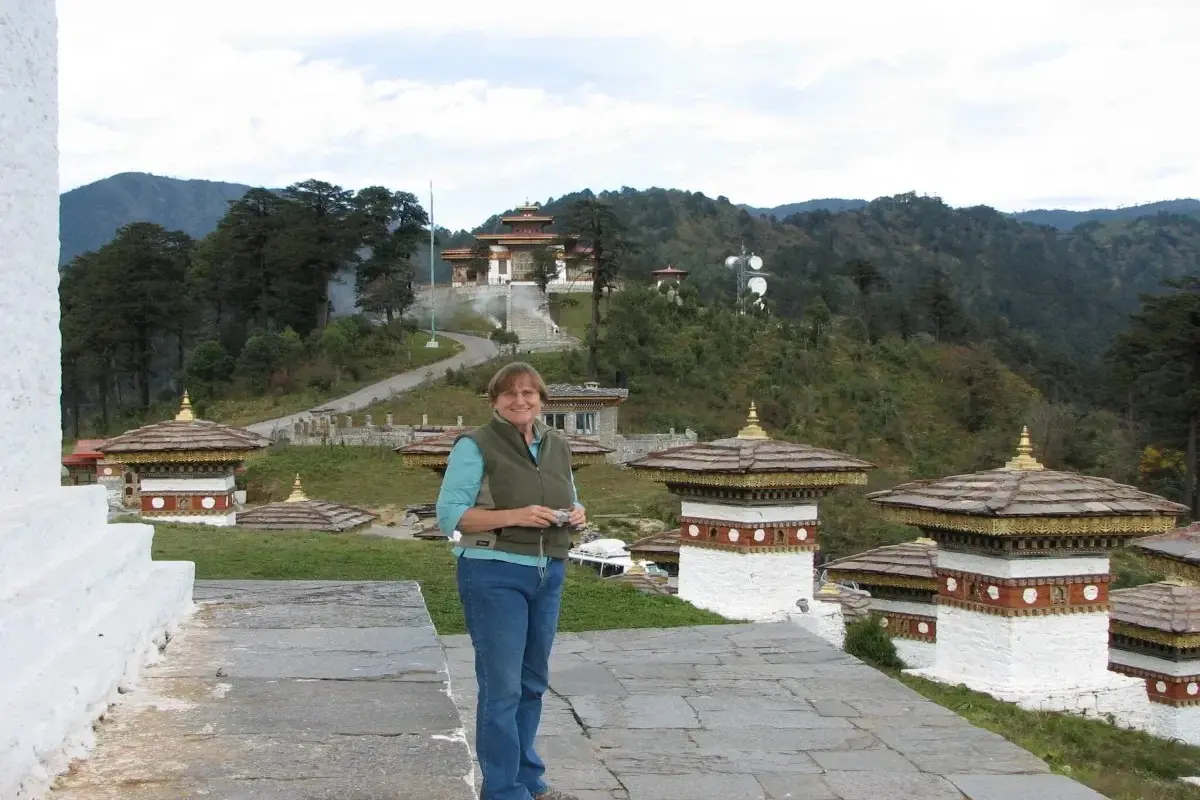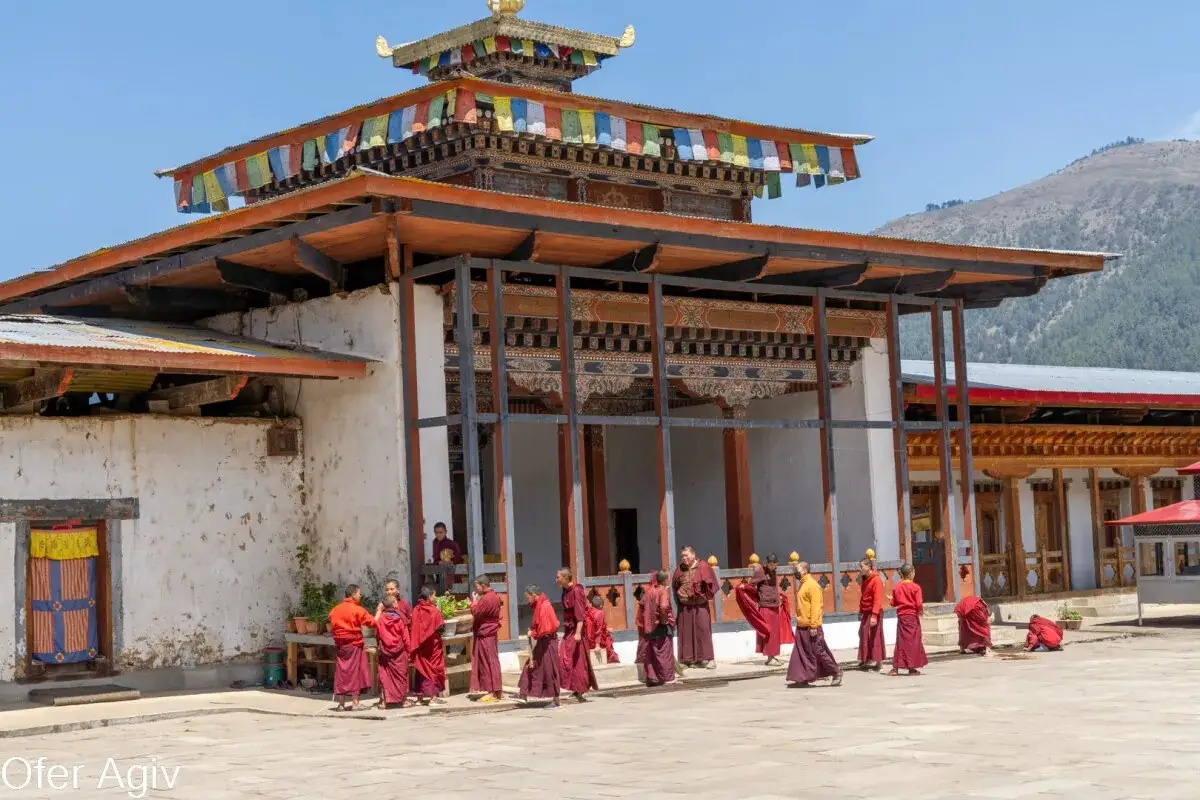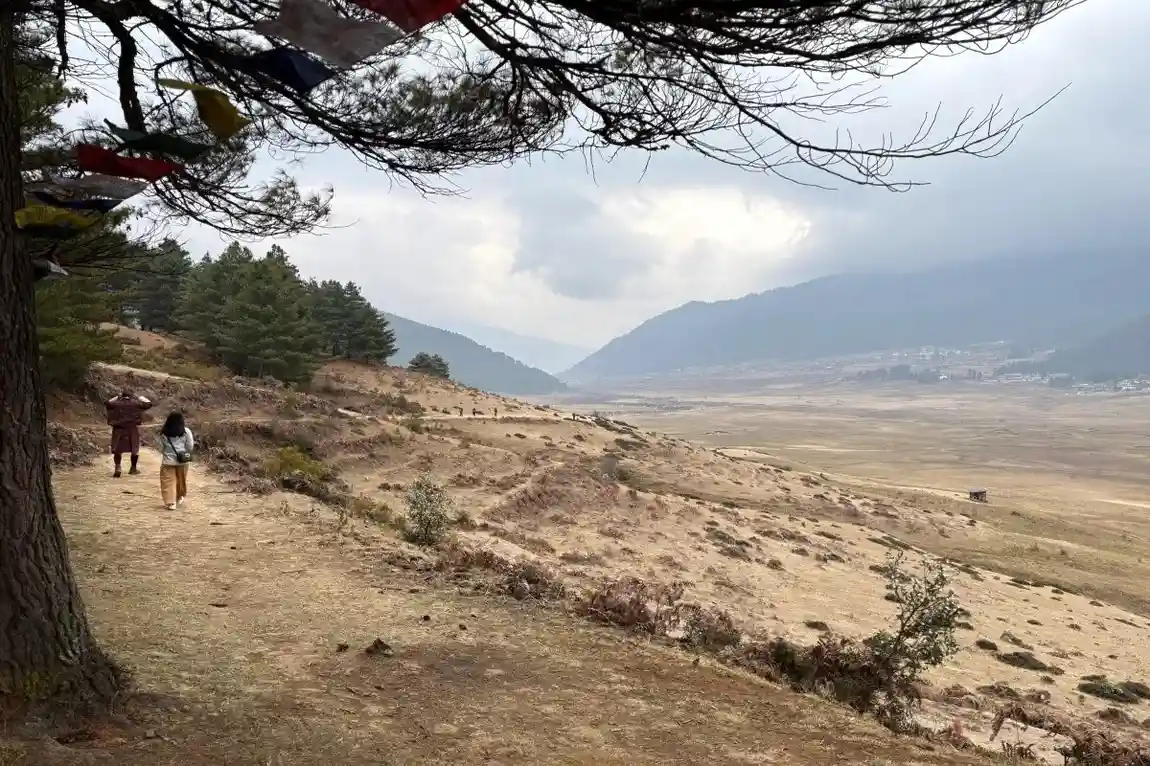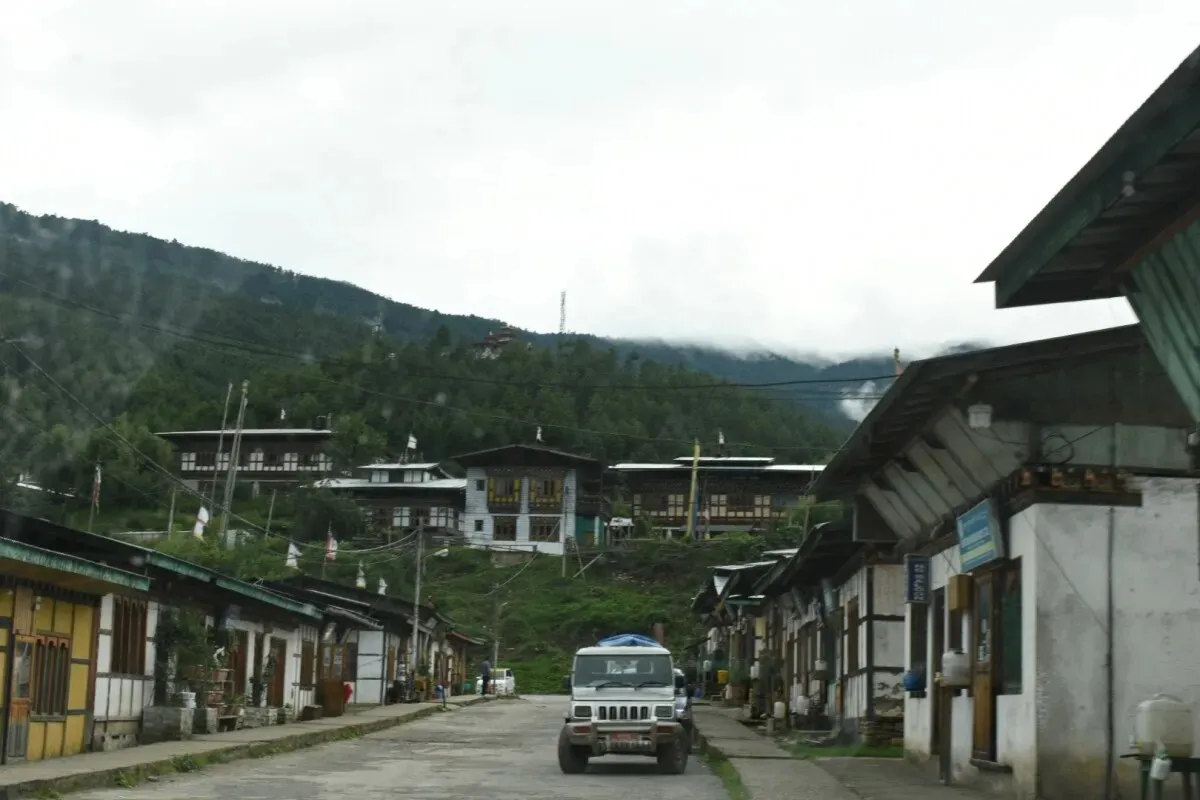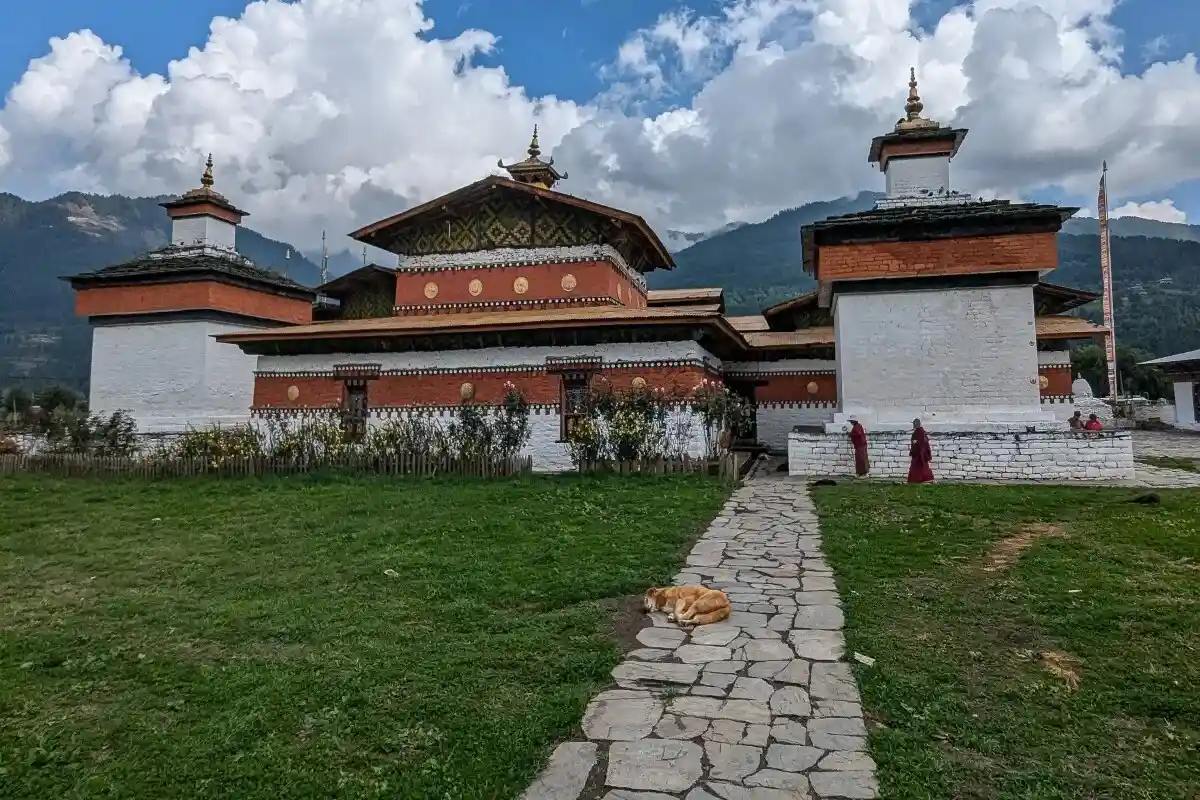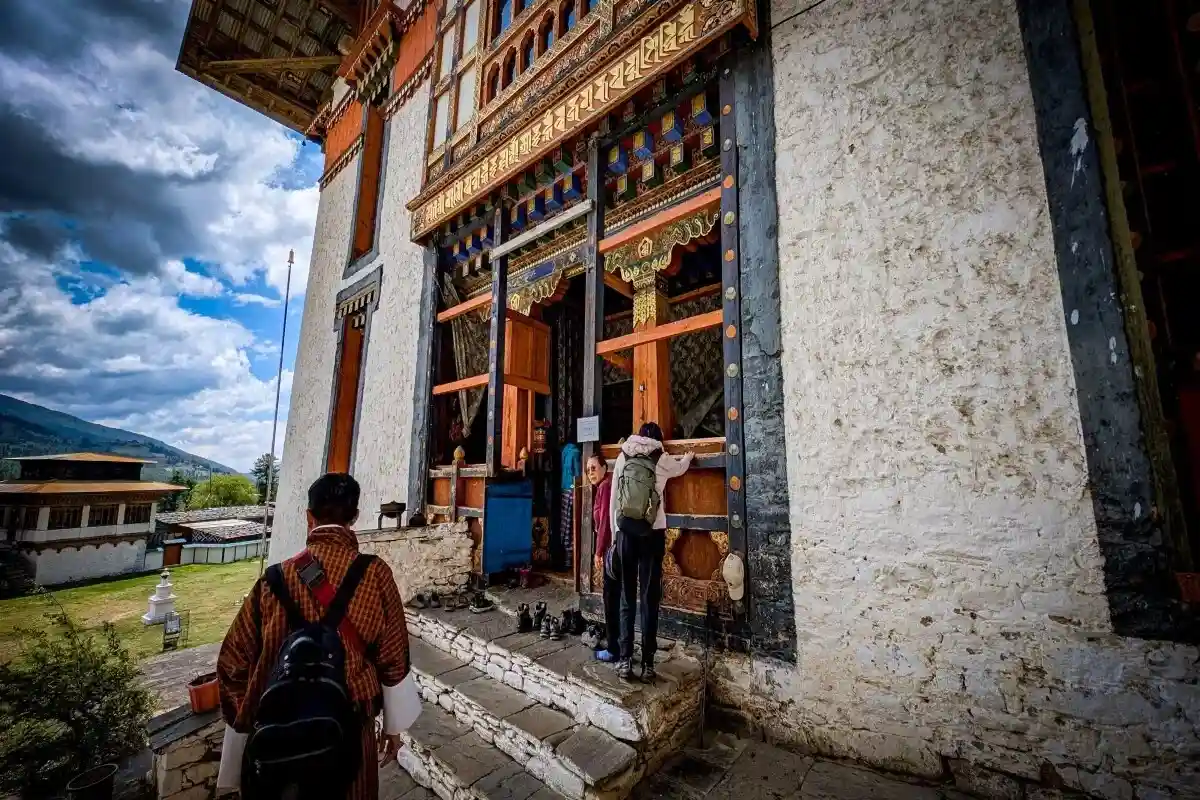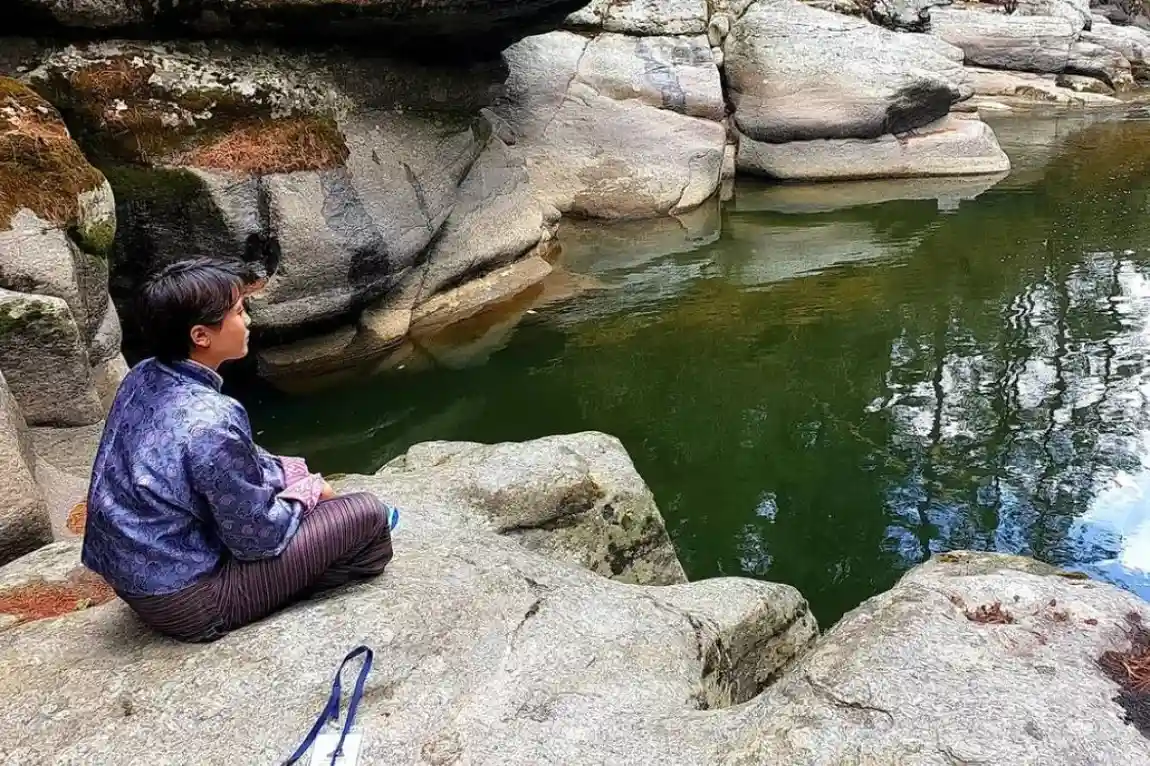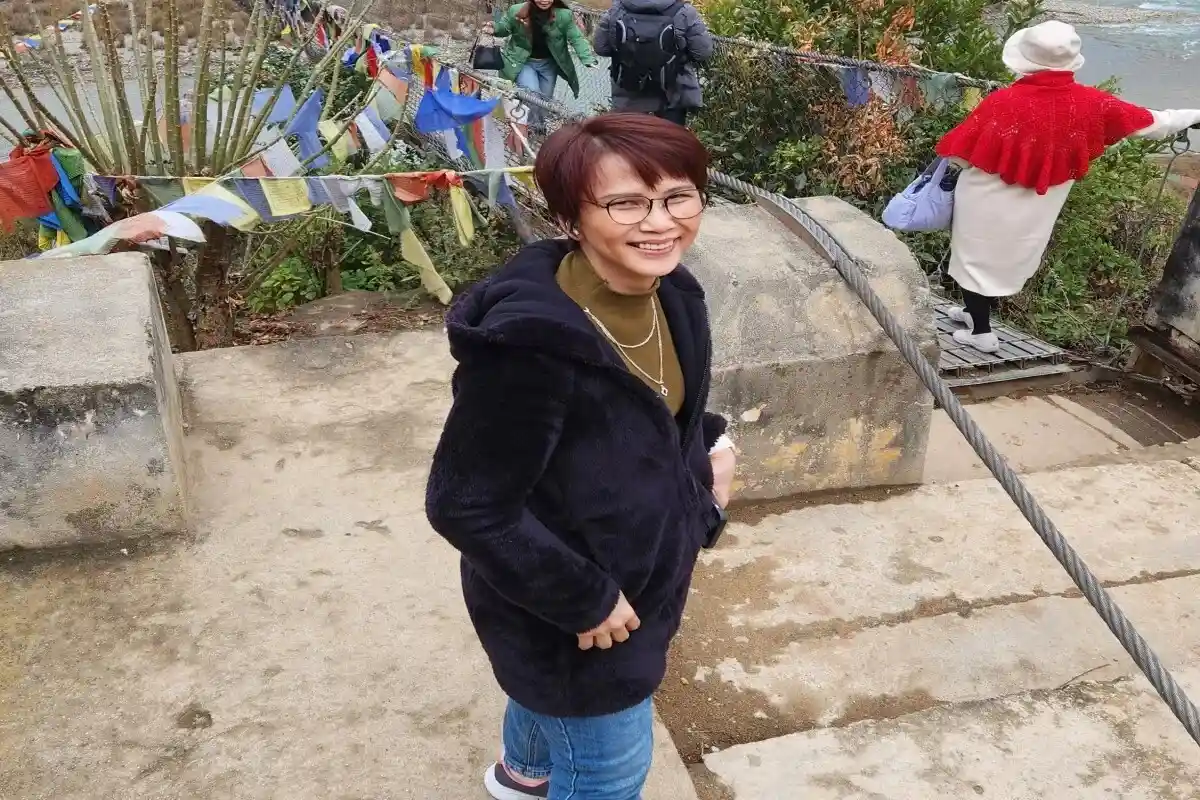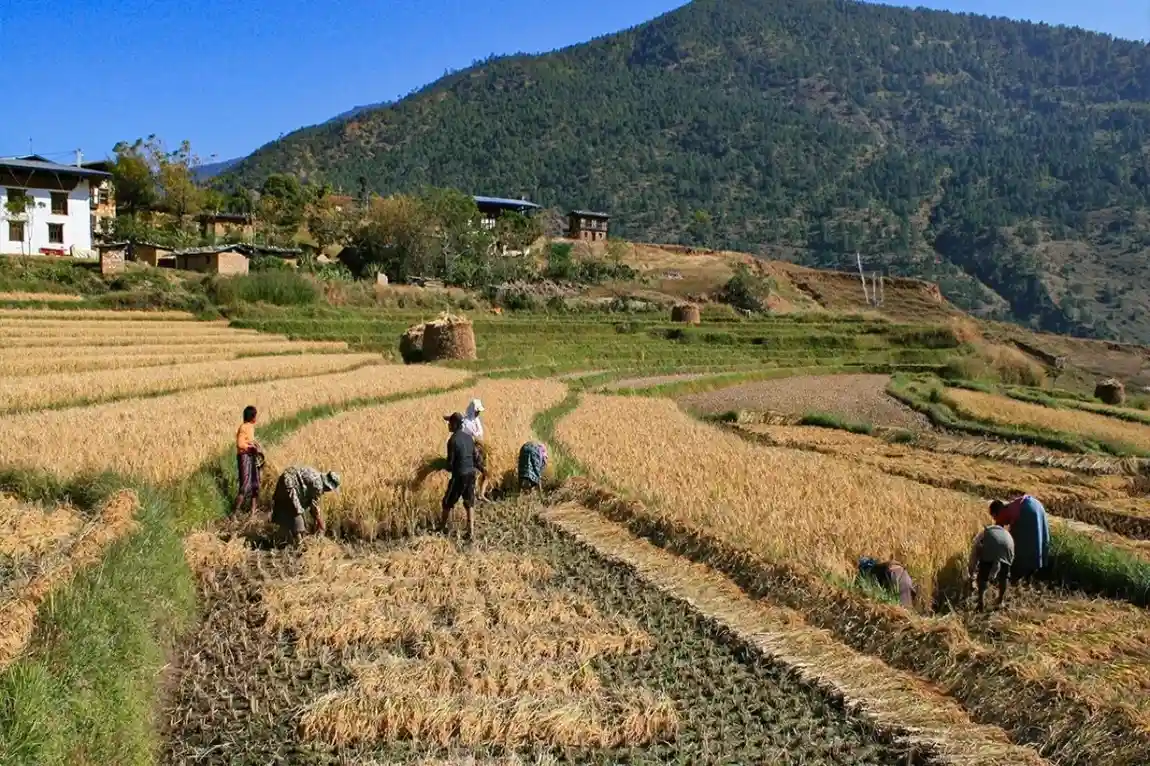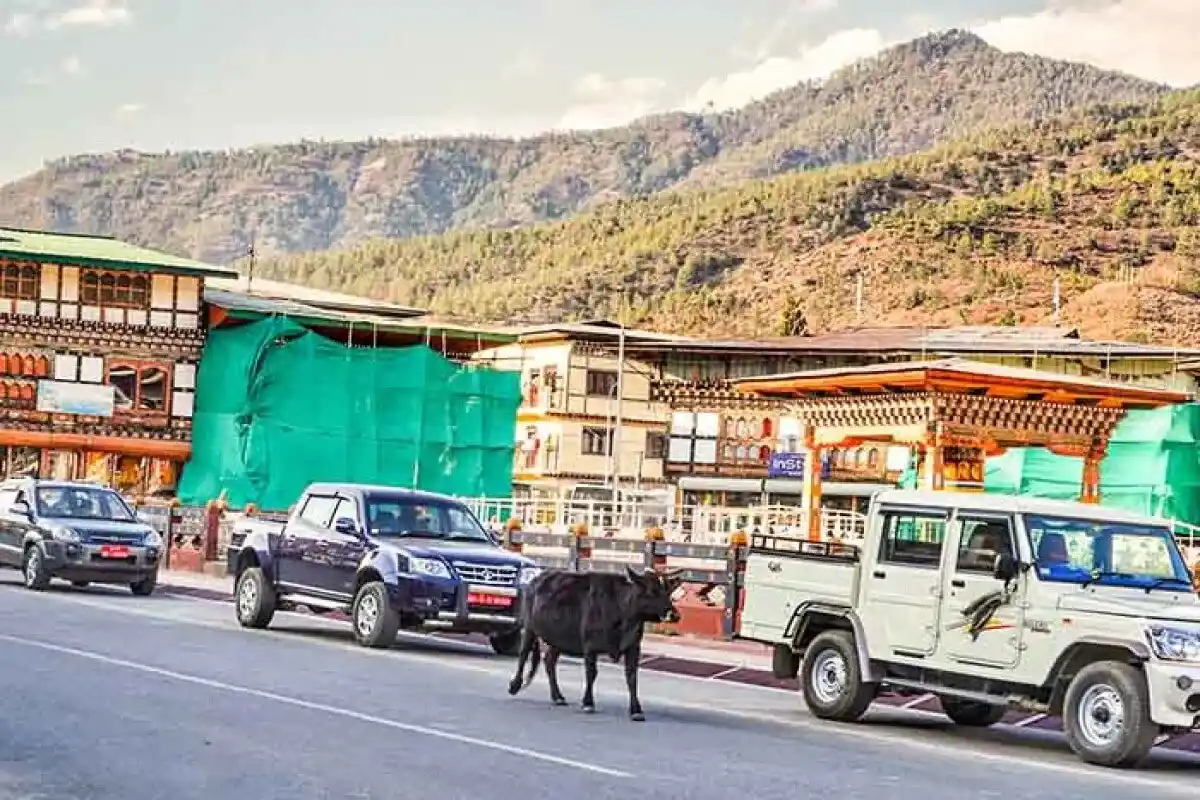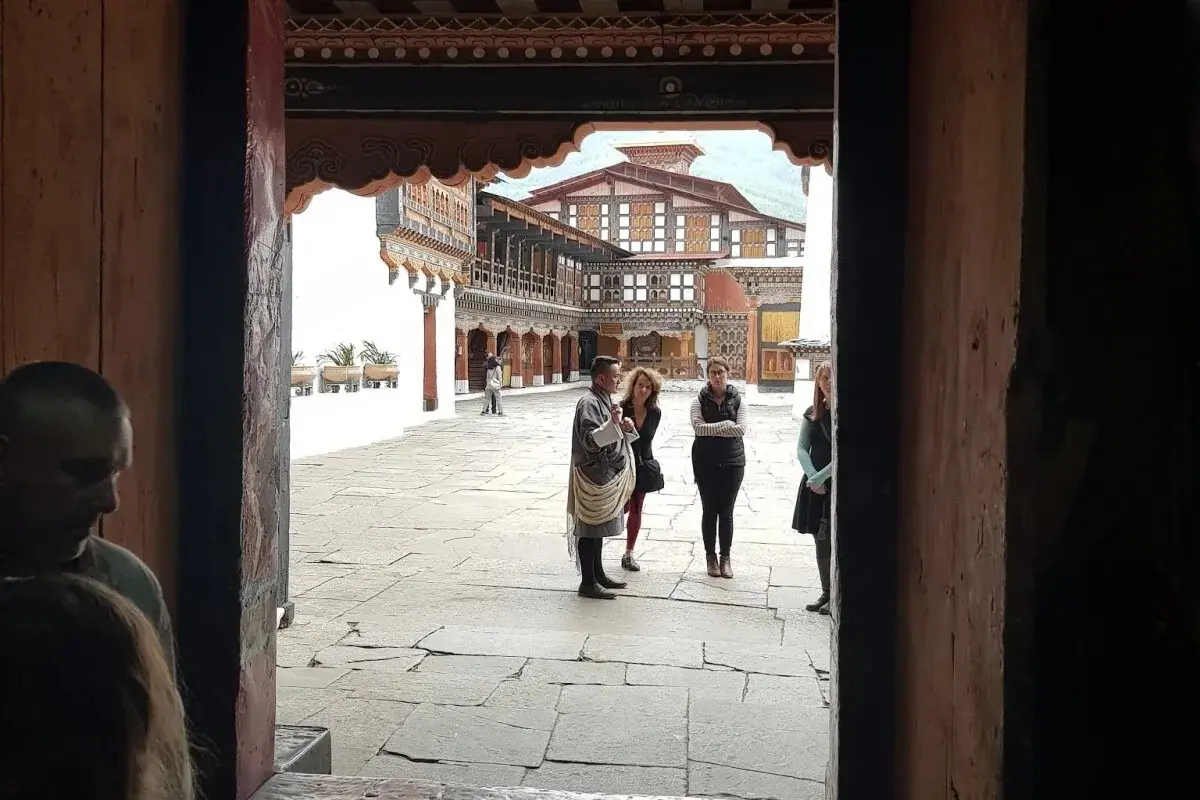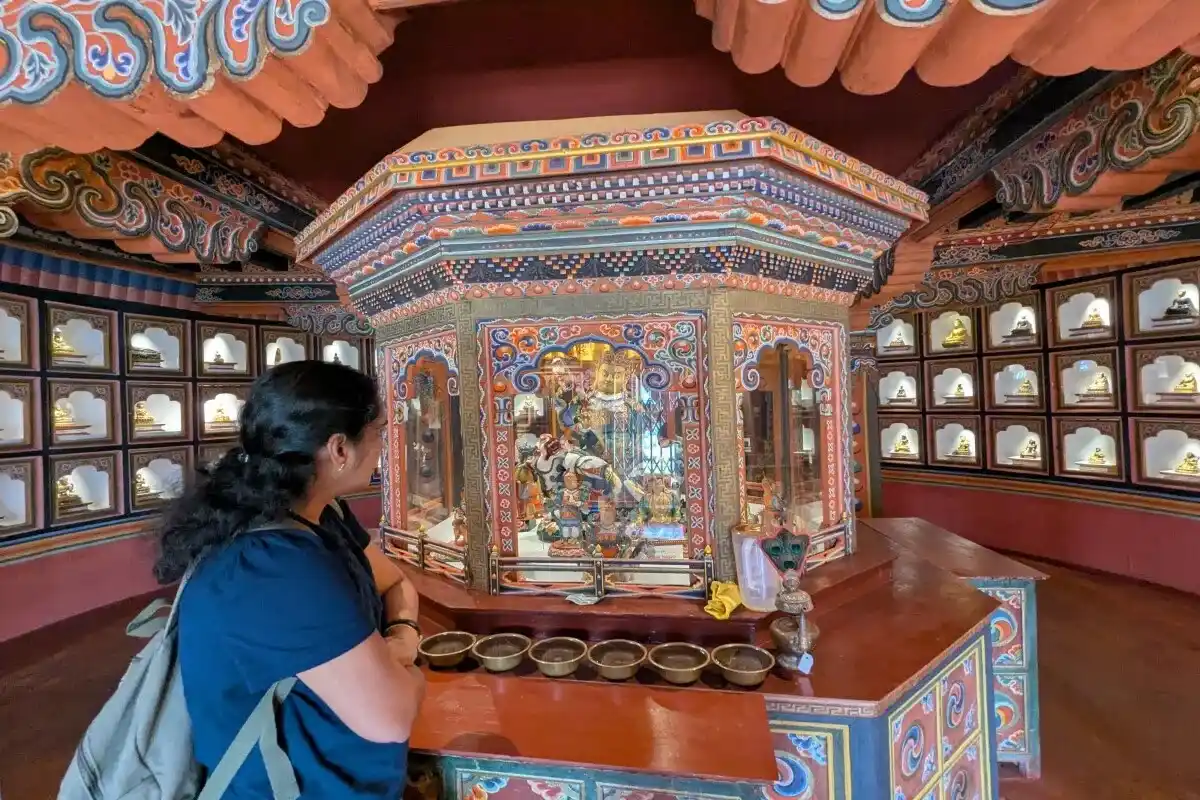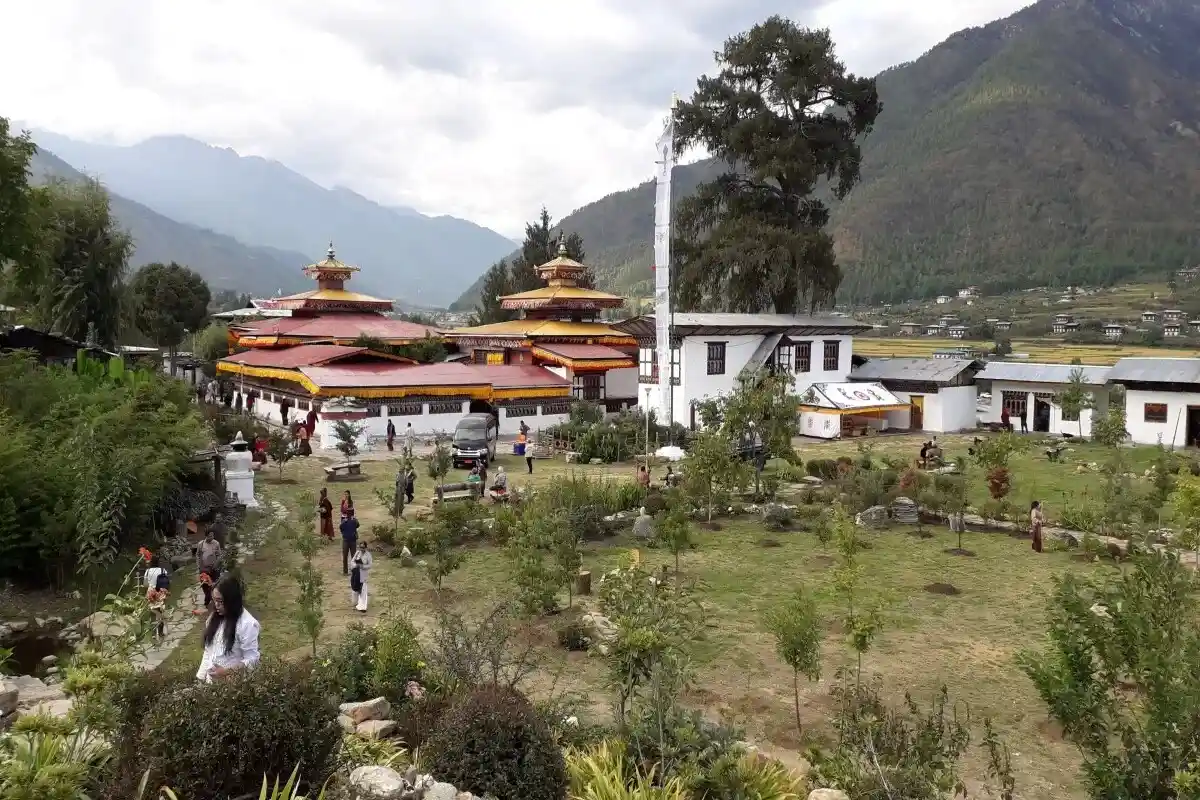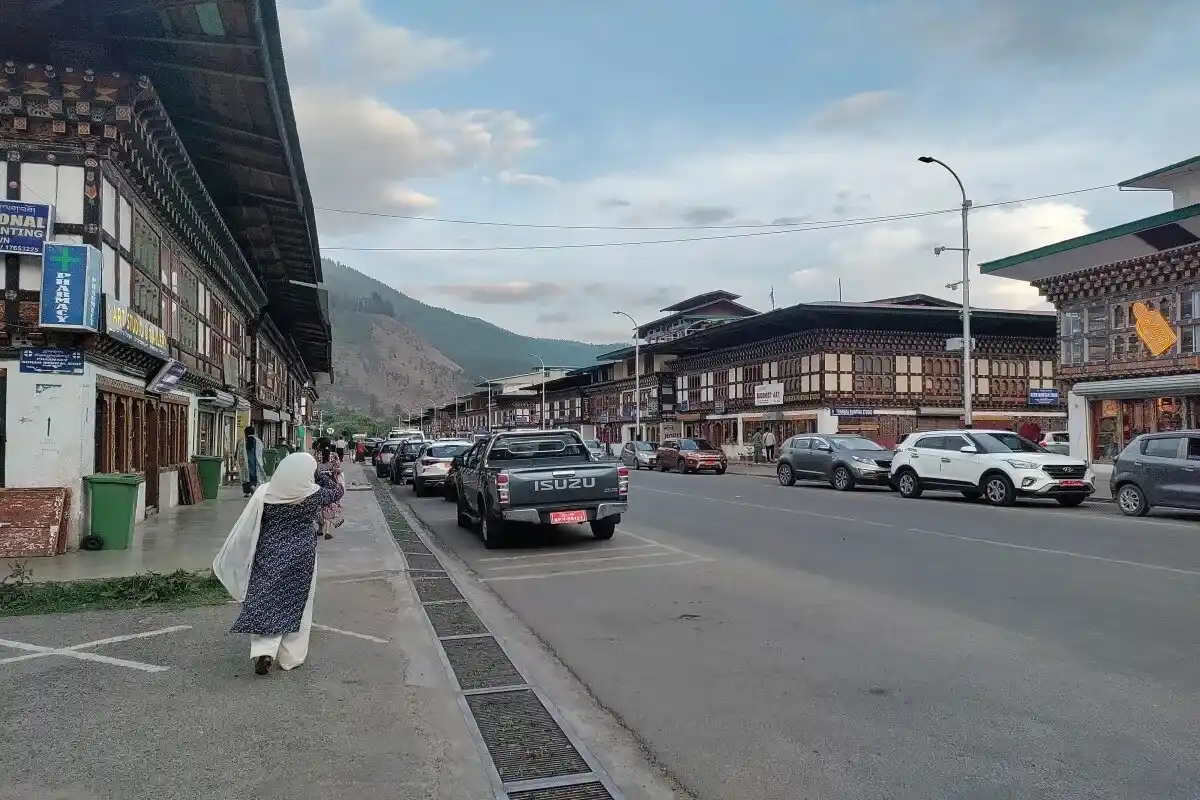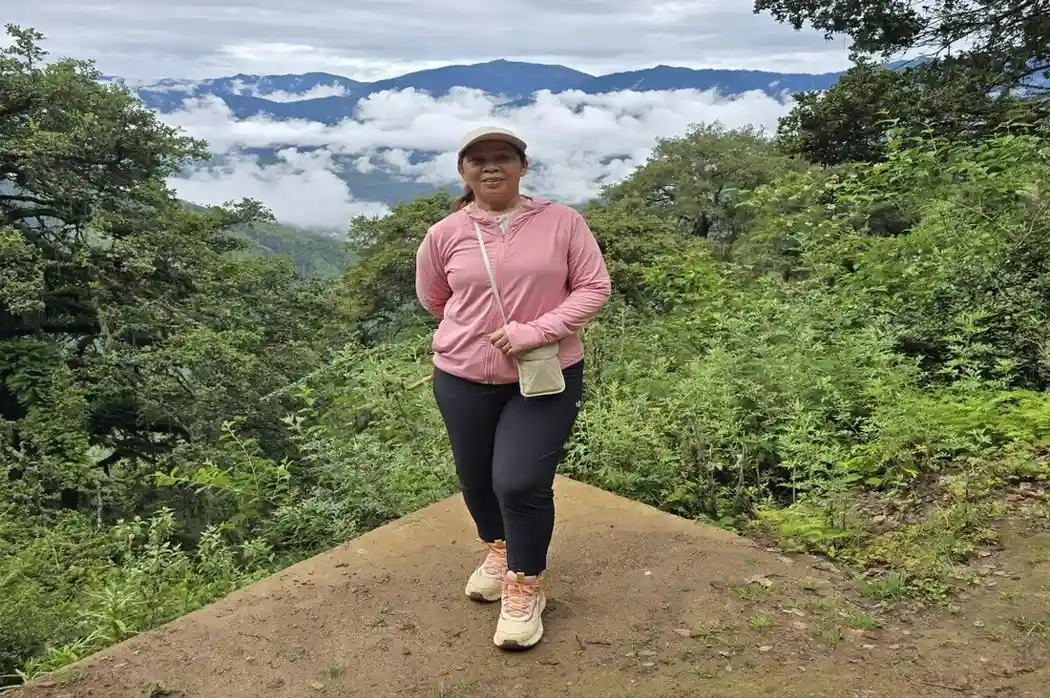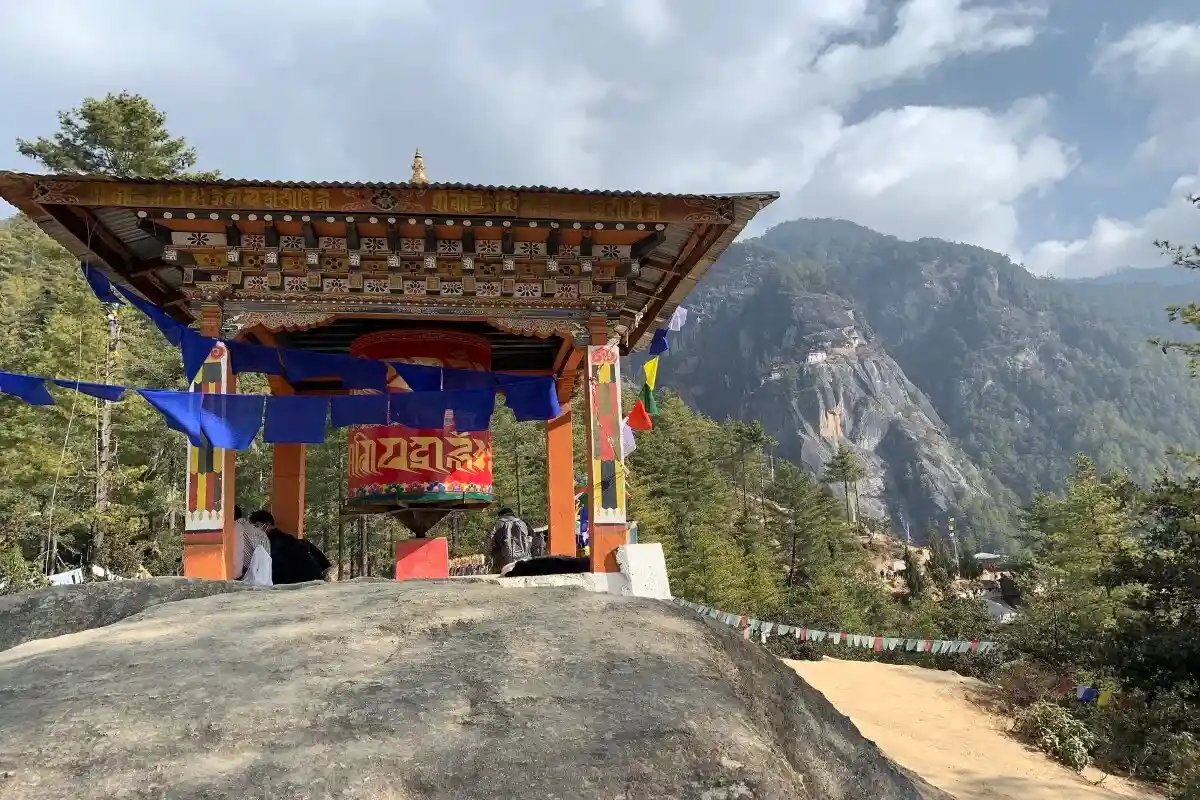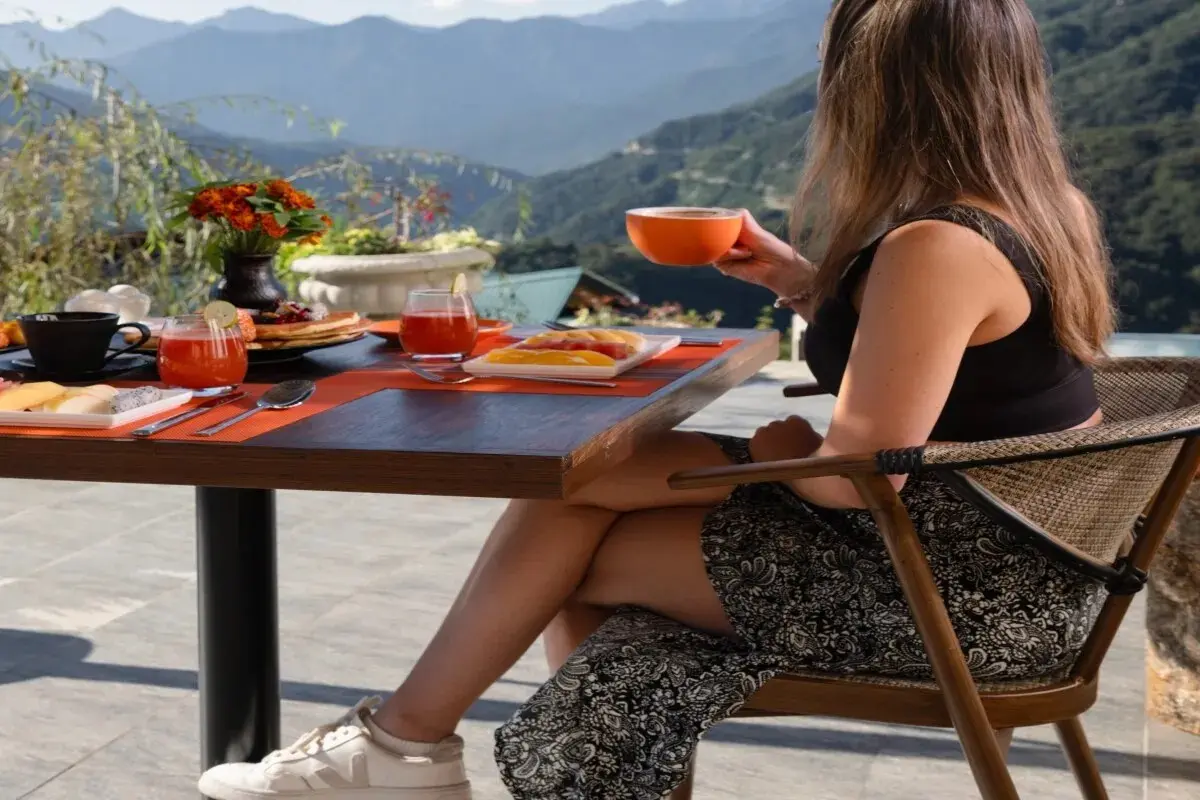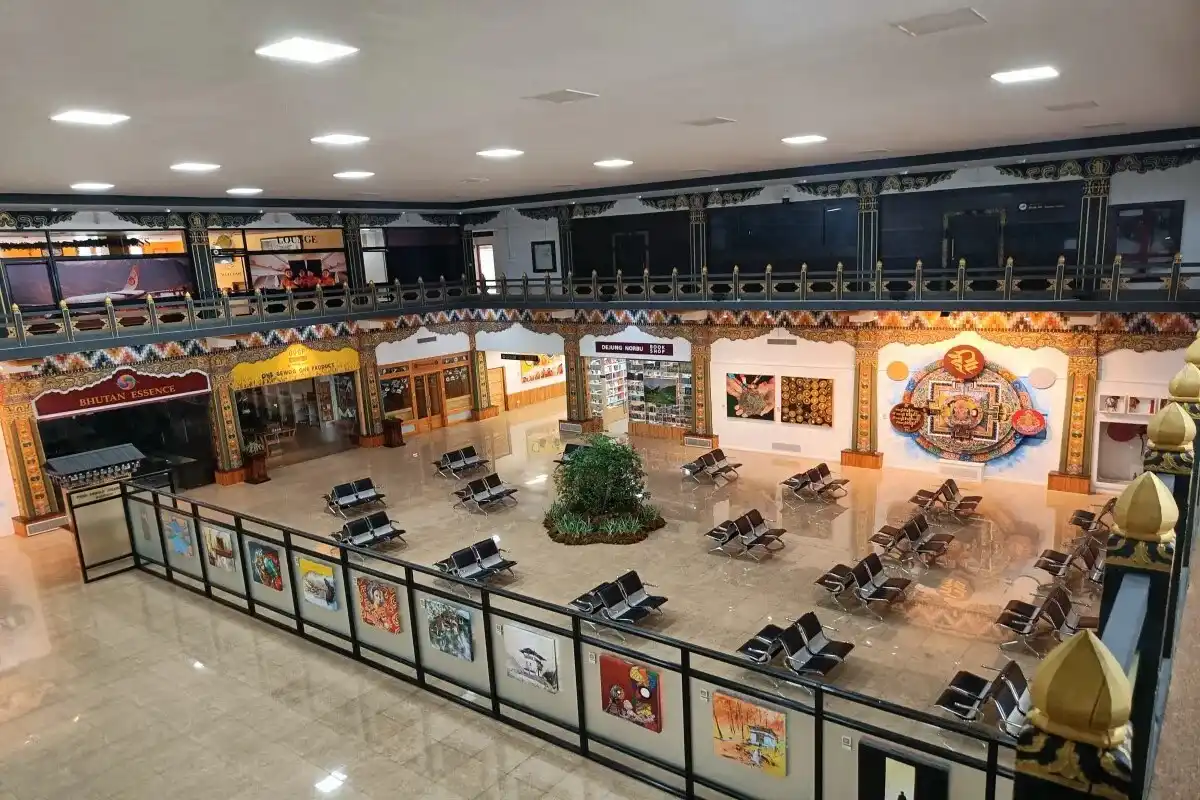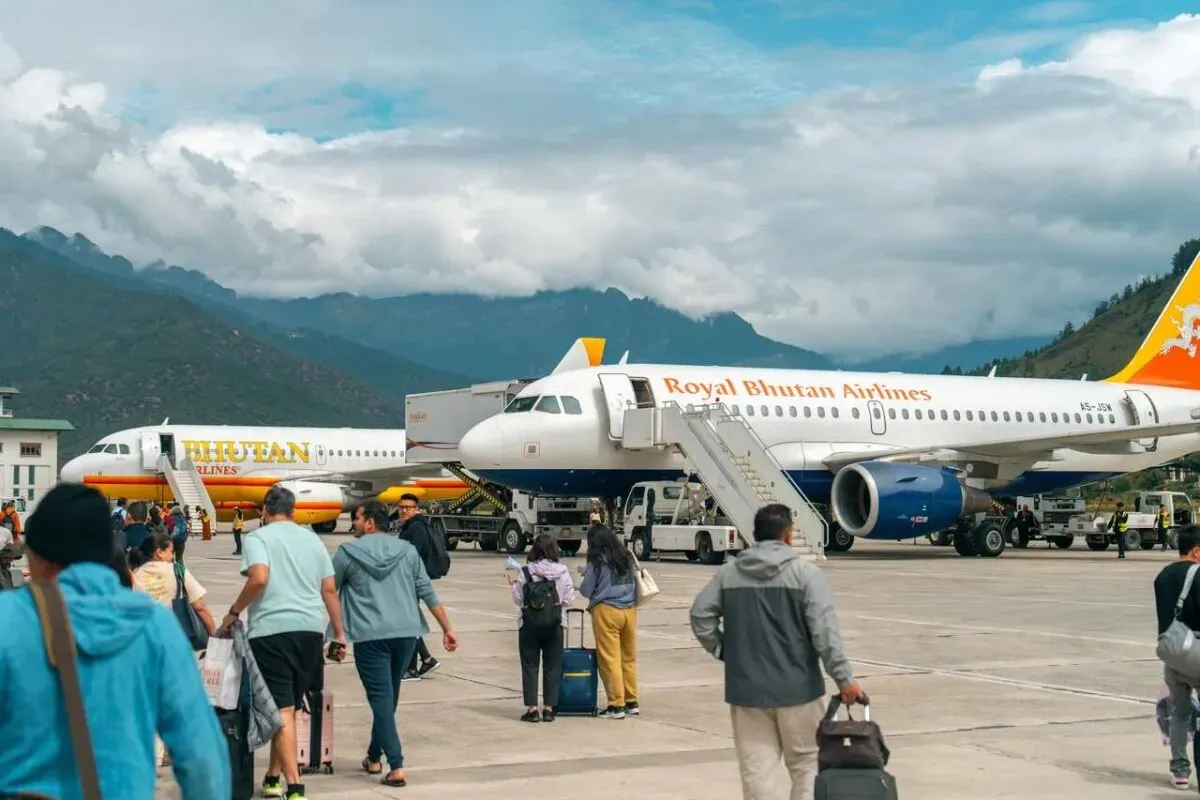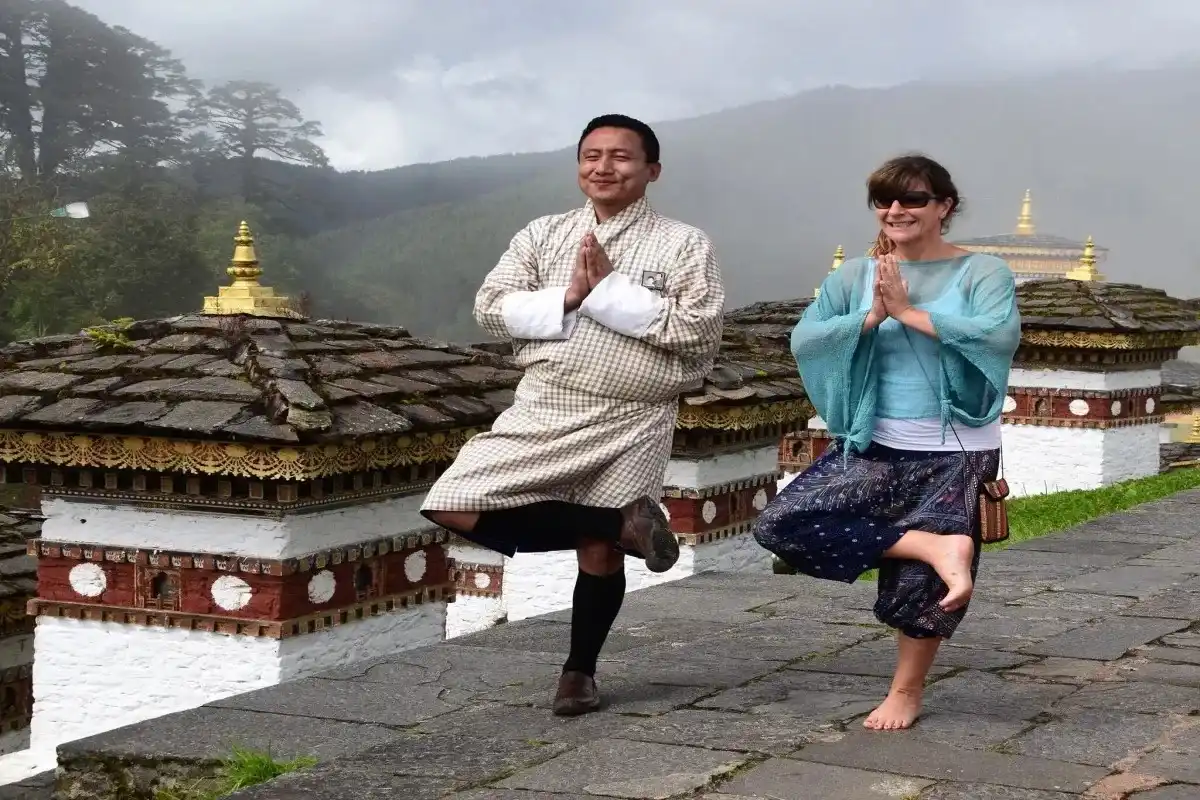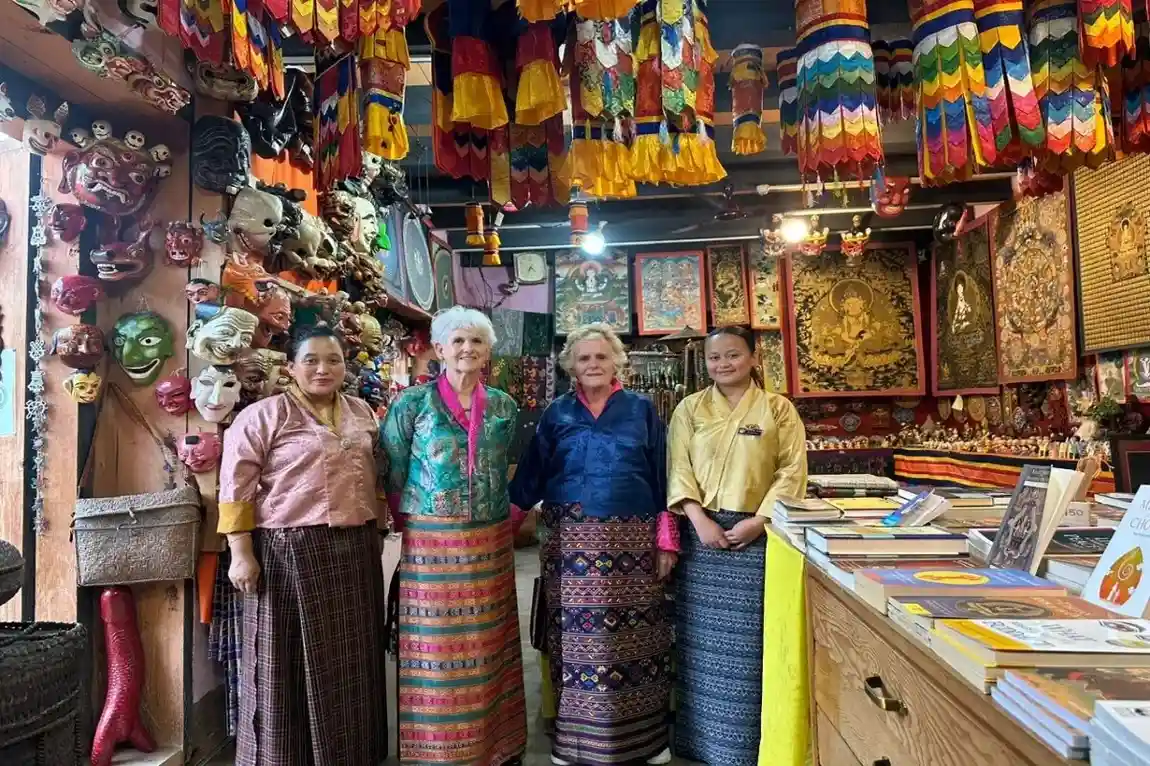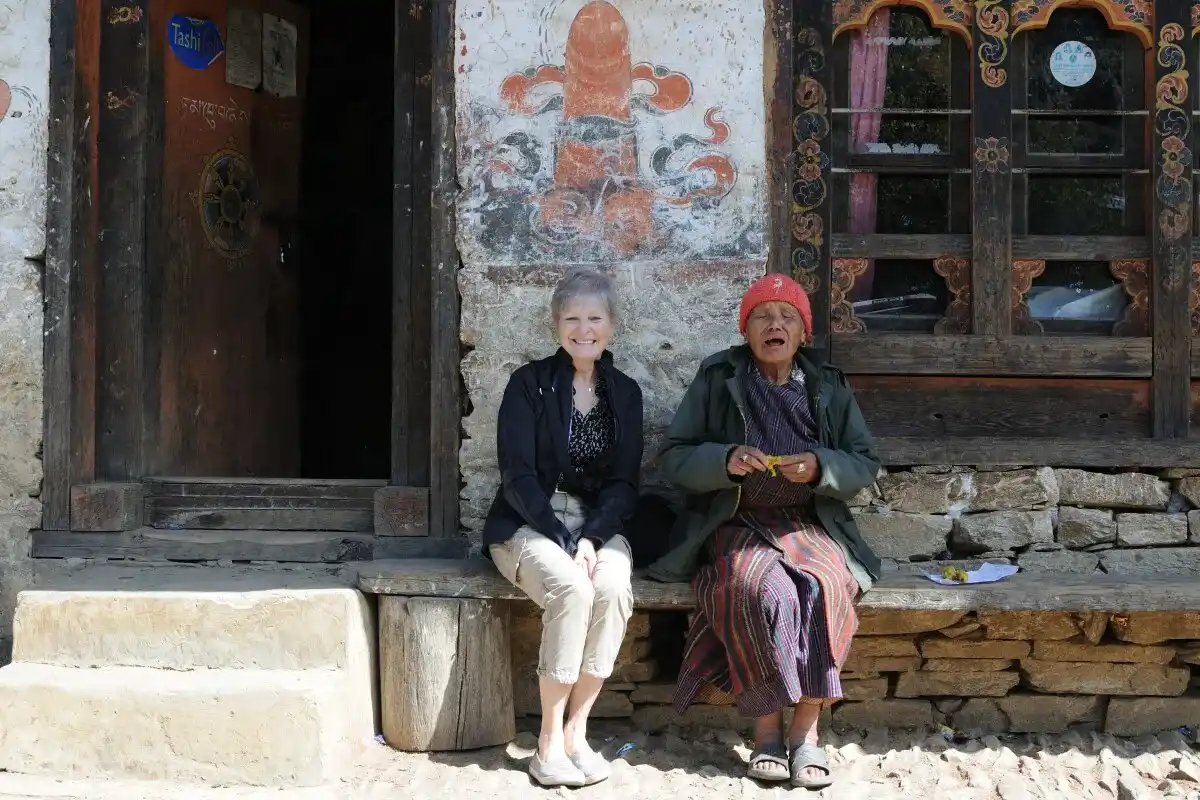Himalayan Adventure for Women in Bhutan - 10 Days
This 10-day tour of Bhutan adventure for women is made for women who love mountains, culture, and quiet time. The trip mixes easy to moderate hikes with visits to old temples and dzongs. You will travel with friendly local guides. The group vibe is warm and supportive.
Highlights
Trip Overview
You will walk along small trails and also sit for simple meditations. You will get to taste home-made Bhutanese food. The tour aims to balance adventure with calm. It is good for women who want peace and adventure.
Highlights of the Tour
This 10 days Himalayan Adventure for Women in Bhutan will let you experience the thrilling beauty of Bhutan. You will get a chance to explore different sacred places and interaction with the locals of Bhutan.
Explore Trek Majestic Himalayan Trails
Follow amazing paths up, where you can see a lot of pine and rhododendron. Every day, a new landscape of land high and low comes into sight. Hikes are planned with care so the group moves at a steady, friendly pace. Steeper sections have short breaks and easier options. You will breathe fresh mountain air and see wide skies. Guides share simple stories about the land and show safe spots to rest.
Discover Vibrant Local Culture and interact with locals
You will get a chance to meet village families and women artisans in small towns and farmsteads. You will watch weaving and try a few simple craft steps yourself. Local hosts often invite the group for tea and home-cooked snacks. You can explore local markets and have an interaction with the locals; conversations are warm and slow, not rushed. Such times provide an honest glimpse of everyday life.
Explore Iconic Landmarks like Tiger’s Nest Monastery, Punakha Dzong, etc
Visit cliffside temples and grand dzongs with carved wood and old murals. Walk wide courtyards where monks move in quiet rhythm. The hike to Tiger’s Nest is bold and memorable, with big valley views. Punakha Dzong lies at a river meeting and feels very photogenic. Each site offers space to reflect and take photos. There are simple etiquette that guides dictate to ensure that a visit is enjoyable and free of hassles.
Enjoy Authentic Bhutanese Cuisine Prepared
You will get to taste home-prepared food lodge hosts. Dishes are based on home recipes with rice, vegetables, and mild cheese stews. A warm bowl is invigorating and fulfilling after walking around during the day. You will discover little details about how foods are prepared.
Discover Hidden Alpine Trails and Untouched Wilderness
You will travel through places where people will not come very often. However, this path leads to quite meadows and amazing viewpoints. These trails pass small streams, mani walls, and remote stone huts. The places feel free of crowds and full of calm. Hikes are slower here, so you can watch birds, spot wildflowers, hear gentle water, and enjoy a walk at your own pace. It feels like finding a small secret each day, perfect for those who love quiet nature and simple discoveries.
Enjoy Wellness like Hot stone baths, meditation sessions, and peaceful nature walks
Balance active days with gentle wellness choices. After hiking, a hot stone bath eases tired muscles and warms the body. Brief guided meditations assist in stabilizing the respiration and relaxing the mind. Slow nature walks and quiet sitting let you absorb the views. Hosts may offer small, low-key local rituals to relax. These moments help your body recover and make the trip feel gentle.
Why Bhutan is Perfect for Women Adventurers
Bhutan feels safe and kind to visitors. People in towns and villages are welcoming. There will be a professional who will guide you throughout the trip. This helps keep trips smooth and secure. This makes it easier for women to travel solo or in small teams. The landscape is also gentle in many parts. Trails are easier to walk. That makes hikes easier for travellers. This mix of safety, local support, and calm culture makes Bhutan a good pick for women who want both adventure and peace.
Enchanting Landscapes and Trails Await
The routes cross many kinds of land. You walk through green forests, past clear streams, and over small passes. Some trails run along river valleys. Others climb to high ridges with beautiful views. In the central valleys, the land is wide and quiet. In western parts like Paro, rock faces and cliffs stand tall. Wetlands and meadows open, and cranes can be seen in Phobjikha. When the air is clear, you have a good view of the Himalayan mountains at Dochula Pass. The combination of forest, field, and mountain gives one a new feeling each day. The majority of the trails are easy to follow and have safe places to rest. The paths are also good for group talks and slow moments to take it all in.
Significance of This Journey for Women Travellers
This trip is more than walking and sightseeing. It is a chance to slow down and listen. Bhutan’s culture centers on kindness, mindfulness, and community. That helps build trust and comfort. Professional guides and locals create safe spaces for sharing and learning. The journey blends physical steps with quiet time. You will learn simple rituals and local care. You may do short meditations at temples. You will also see how villages live in balance with nature. For many women, this mix of nature, culture, and companionship becomes a deep and steady travel memory.
You will walk along small trails and also sit for simple meditations. You will get to taste home-made Bhutanese food. The tour aims to balance adventure with calm. It is good for women who want peace and adventure.
Highlights of the Tour
This 10 days Himalayan Adventure for Women in Bhutan will let you experience the thrilling beauty of Bhutan. You will get a chance to explore different sacred places and interaction with the locals of Bhutan.
Explore Trek Majestic Himalayan Trails
Follow amazing paths up, where you can see a lot of pine and rhododendron. Every day, a new landscape of land high and low comes into sight. Hikes are planned with care so the group moves at a steady, friendly pace. Steeper sections have short breaks and easier options. You will breathe fresh mountain air and see wide skies. Guides share simple stories about the land and show safe spots to rest.
Discover Vibrant Local Culture and interact with locals
You will get a chance to meet village families and women artisans in small towns and farmsteads. You will watch weaving and try a few simple craft steps yourself. Local hosts often invite the group for tea and home-cooked snacks. You can explore local markets and have an interaction with the locals; conversations are warm and slow, not rushed. Such times provide an honest glimpse of everyday life.
Explore Iconic Landmarks like Tiger’s Nest Monastery, Punakha Dzong, etc
Visit cliffside temples and grand dzongs with carved wood and old murals. Walk wide courtyards where monks move in quiet rhythm. The hike to Tiger’s Nest is bold and memorable, with big valley views. Punakha Dzong lies at a river meeting and feels very photogenic. Each site offers space to reflect and take photos. There are simple etiquette that guides dictate to ensure that a visit is enjoyable and free of hassles.
Enjoy Authentic Bhutanese Cuisine Prepared
You will get to taste home-prepared food lodge hosts. Dishes are based on home recipes with rice, vegetables, and mild cheese stews. A warm bowl is invigorating and fulfilling after walking around during the day. You will discover little details about how foods are prepared.
Discover Hidden Alpine Trails and Untouched Wilderness
You will travel through places where people will not come very often. However, this path leads to quite meadows and amazing viewpoints. These trails pass small streams, mani walls, and remote stone huts. The places feel free of crowds and full of calm. Hikes are slower here, so you can watch birds, spot wildflowers, hear gentle water, and enjoy a walk at your own pace. It feels like finding a small secret each day, perfect for those who love quiet nature and simple discoveries.
Enjoy Wellness like Hot stone baths, meditation sessions, and peaceful nature walks
Balance active days with gentle wellness choices. After hiking, a hot stone bath eases tired muscles and warms the body. Brief guided meditations assist in stabilizing the respiration and relaxing the mind. Slow nature walks and quiet sitting let you absorb the views. Hosts may offer small, low-key local rituals to relax. These moments help your body recover and make the trip feel gentle.
Why Bhutan is Perfect for Women Adventurers
Bhutan feels safe and kind to visitors. People in towns and villages are welcoming. There will be a professional who will guide you throughout the trip. This helps keep trips smooth and secure. This makes it easier for women to travel solo or in small teams. The landscape is also gentle in many parts. Trails are easier to walk. That makes hikes easier for travellers. This mix of safety, local support, and calm culture makes Bhutan a good pick for women who want both adventure and peace.
Enchanting Landscapes and Trails Await
The routes cross many kinds of land. You walk through green forests, past clear streams, and over small passes. Some trails run along river valleys. Others climb to high ridges with beautiful views. In the central valleys, the land is wide and quiet. In western parts like Paro, rock faces and cliffs stand tall. Wetlands and meadows open, and cranes can be seen in Phobjikha. When the air is clear, you have a good view of the Himalayan mountains at Dochula Pass. The combination of forest, field, and mountain gives one a new feeling each day. The majority of the trails are easy to follow and have safe places to rest. The paths are also good for group talks and slow moments to take it all in.
Significance of This Journey for Women Travellers
This trip is more than walking and sightseeing. It is a chance to slow down and listen. Bhutan’s culture centers on kindness, mindfulness, and community. That helps build trust and comfort. Professional guides and locals create safe spaces for sharing and learning. The journey blends physical steps with quiet time. You will learn simple rituals and local care. You may do short meditations at temples. You will also see how villages live in balance with nature. For many women, this mix of nature, culture, and companionship becomes a deep and steady travel memory.
Short Itinerary
Arrive in Paro, drive to Thimphu, visit Buddha Dordenma
Sightseeing in Thimphu – Tashichho Dzong, Memorial Chorten, Folk Heritage and Textile Museum
Drive to Gangtey via Dochula Pass, visit Gangtey Monastery and Nature Trail
Travel to Bumthang via Trongsa, visit Trongsa Dzong and Ta Dzong
Explore Bumthang – Jambay Lhakhang, Kurje Lhakhang and Burning Lake (Mebartsho)
Drive to Wangdue/Punakha, visit Punakha Dzong and Suspension Bridge
Return to Paro, visit Rinpung Dzong and National Museum, stroll in Paro town
Visit Kyichu Lhakhang, Drukgyel Dzong ruins and Paro market
Hike to Tiger’s Nest Monastery (Paro Taktsang)
Departure from Paro - shopping, short walk, farewell
Himalayan Adventure for Women in Bhutan Itinerary
On the first day, you will reach Paro International Airport. From the airport, you drive to Thimphu on scenic routes. The drive takes about 1.5–2 hours. You will pass small farms and terraced fields. Along the way, you first get wide views of the hills. In Thimphu, you will pay a visit to the statue of Buddha Dordenma. It is built on top of a hill. So, the whole valley is visible from this point. The statue is a calm place to start. You can enjoy the beautiful scenery from the point. It offers easy walking areas and good views. Later, you check into your hotel. The hotel will be simple and clean. You meet your guide and group . You will hear safety tips and walking plans. The first night is for rest. You sleep early to adjust to the hill air. This day is gentle and helps you tune into Bhutan time.
Today, you explore Thimphu, the capital. The day begins in Tashichho Dzong. This is both a government center and a temple. You will walk around the courtyard and step inside short, quiet areas when allowed. Next, you visit the National Memorial Chorten. People come here to spin prayer wheels and offer light. The Folk Heritage Museum shows how Bhutanese homes and farms look. It is small but sharp and easy to walk. You will also visit the Textile Museum. This place tells the story of Bhutanese weaving. You will see hand-woven cloth and tools. The guide may arrange a short demo by a local weaver. Then you can visit local handicraft shops. Small stands offer scarves, weavings, and simple souvenirs. The pace today is slow and friendly. There is room for tea breaks and rest. In the evening, you may have a short walk in town or a quiet group dinner at a local restaurant. You will have an overnight stay in Thimphu.
Today, you will drive between Thimphu and Gangtey. The road climbs to Dochula Pass first. At the pass, you can step out and feel the wide mountain air. On a clear day, you can see many Himalayan peaks. The pass has many small chortens and prayer flags. There, you join the road to Gangtey and Phobjikha Valley. The village of Gangtey is located close to a broad valley where the cranes with black necks appear during winter. You visit the Gangtey Monastery that overlooks the valley. The monastery is calm and full of prayer flags. After the monastery, you walk through the Gangtey Nature Trail or visit nearby local homes. The trail is gentle and has wide views of fields and streams. The guide will point out local plants and explain life in the valley. If the trip is in crane season, the valley is still and filled with birds. Gangtey is perfect for slow walks and photography. You will stay overnight in a rustic lodge near the fields.
This is a longer travel day with good sights. You will move on to Trongsa on your way out of Gangtey. Trongsa is an old fortress on a high ridge. On the way to the dzong, you will visit the courtyards and encounter the robust architecture. Near the dzong is Ta Dzong, a tower turned into a museum. Ta Dzong displays local history and equipment from ancient days. After Trongsa, you drive towards the Bumthang valley. The road winds through hillsides and woods. The Bumthang valley feels to be the spiritual center of Bhutan. Small temples are scattered through the hillsides, and the atmosphere is serene. In Bumthang, you may walk in a small village and meet locals. The lodge in Bumthang is a chance to rest after the long drive. You will have time to stretch and walk around the village lanes. The day blends history with peaceful valley views.
Today, you will explore key religious sites in Bumthang. Start with Jambay Lhakhang. People come to pray and to watch festivals. If your timing matches, you might see a local drup festival. Next, you will visit Kurje Lhakhang. Kurje is an important pilgrimage site with carved caves. The guide will tell the local stories and legends. You then go to Membartsho, also called the Burning Lake. It is a narrow river spot that looks sacred and quiet. Locals speak of stories tied to this place. The paths here are short but may be rocky, so take care on your steps. You also may meet locals who weave or cook. They may show small crafts and let you try a simple local snack. The day is slow and spiritual, with short walks and calm spots to rest or reflect.
You leave the high valley and drive toward Wangdue Phodrang or Punakha. The roads drop to lower, greener valleys. Punakha sits beside a wide river and has a famous dzong. You stop to see Punakha Dzong. It sits where two rivers meet and has bright carved wood and long roofs. The dzong is a quiet place for slow walks and photos. Nearby is the Punakha Suspension Bridge. You can walk the bridge for simple views of the river and terraces. The guide will tell stories of the dzong and historic events. In villages, you may meet local farmers who grow rice and vegetables. You will stay at a riverside lodge and may enjoy an evening walk near the fields.
Today you will return west toward Paro. The drive may pass the low hills and the Dochula Pass again. Stop for pictures if the sky is clear. In Paro, visit Paro Dzong and Rinpung Dzong. These two dzongs hold prayer halls and grand woodwork. Rinpung Dzong sits above the river, standing strong and imposing. You will also visit the National Museum in Ta Dzong. The museum gives a good overview of Bhutan’s art and history. There are thangka paintings and local tools on display. After visiting the museum, you can enjoy walking around Paro town. You can explore small shops that sell spices, salts, and woven goods. This day is lighter to let you rest before the Tiger’s Nest hike the next day. The night in Paro is calm and a good time to pack light for the hike.
This day is for local temples and easy walking. Visit Kyichu Lhakhang, one of Bhutan’s oldest temples. The place feels small, old still authentic. Then walk slowly in the market lanes of Paro town. Here, small stalls sell snacks and local tea. You may taste butter tea or purchase the little souvenirs. Provided that there is time, see Drukgyel Dzong ruins. The ruins are located on a slope and overlook the valley. The guide can explain the history and the restoration plans, if any. The day is relaxed to keep your energy for the big hike. Pack comfortable shoes and a light day pack. The lodge in Paro offers a nice place to rest.
This is day, you will take a hike up to Tiger’s Nest Monastery. This monastery is also known as Paro Taktsang. You will hike through the forest and the cliffside. The hike takes about 3–5 hours, depending on your pace. There is a mid-point cafe where you can rest and enjoy the valley view. The last section goes to a high viewpoint and then down to the monastery area. Paro Taktsang lies on a cliff and looks very striking. Inside, there are small prayer rooms and quiet spots to sit. Many visitors come here to breathe, pray, or be still. The guide will remind you about temple rules like no shoes inside and quiet steps. After the hike, you return to Paro town. The evening is for rest and gentle walking. This hike is also a highlight of this trip.
On the last day, you may do final shopping or a short walk in Paro. You have time for tea or snacks before the drive to Paro International Airport. The drive to the airport is short. You check in at the airport and bid farewell to your guide and your fellow travelmates. Many travelers feel calm and full after this trip. You will leave with new friends and local memories. This day is simple and focuses on practical steps like flight times and luggage. The tour ends with a gentle goodbye and a lot of memories to cherish forever.
Know Before You Travel
- Ideal Season For Trip: The best months to travel are spring and autumn. Spring falls from March to May. Flowers and rhododendron bloom during that period. Autumn falls from September to November. The air is clear during the autumn season, and you will get strong mountain views. Trails will be wet and slippery during the monsoon season. So, it is not a good idea to travel during the monsoon season. Winter is cold in the high places but quiet, with few visitors. Many festivals in spring are celebrated in autumn. Joining a festival gives deep cultural moments. If you want clear skies and great photos, pick spring or autumn. These seasons also match wildlife visits like the crane season in Phobjikha. Plan your tour in one of these seasons for the best mix of weather and culture.
FAQs for Himalayan Adventure for Women in Bhutan
Reviews & Ratings
-
Guarantee -
Thimphu,Bhutan -
975+17160228
Ready to Explore Bhutan?
Start your journey today and discover the magic of Bhutan with our expert guides and carefully crafted tours.
Book This Trip
-
No booking or credit card fees -
Best price guarantee -
Full customize trip
Ask a Question
Feel free to ask us anything about this tour. A travel expert will then get back to you as soon as possible
Ready to Explore Bhutan?
Start your journey today and discover the magic of Bhutan with our expert guides and carefully crafted tours.
